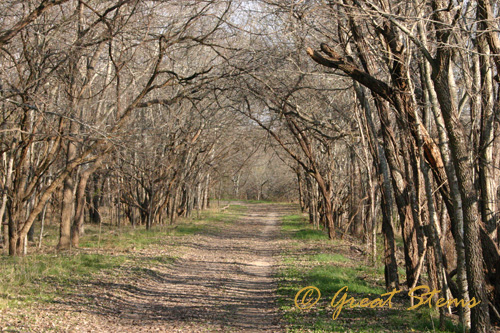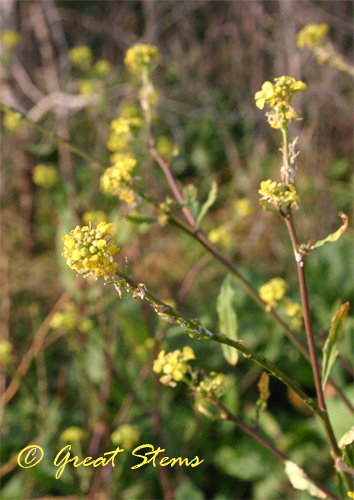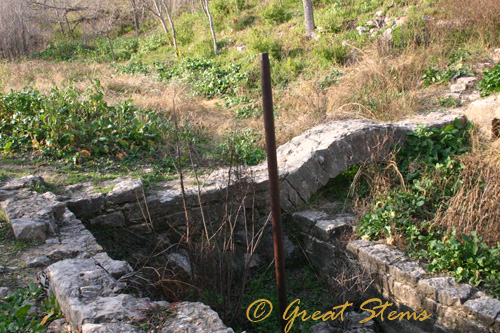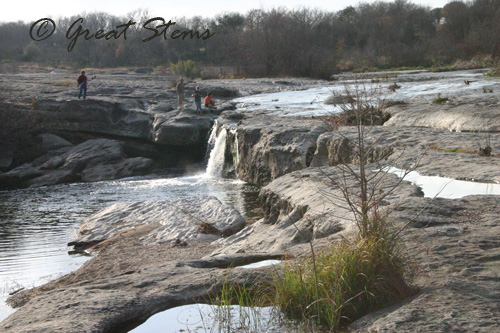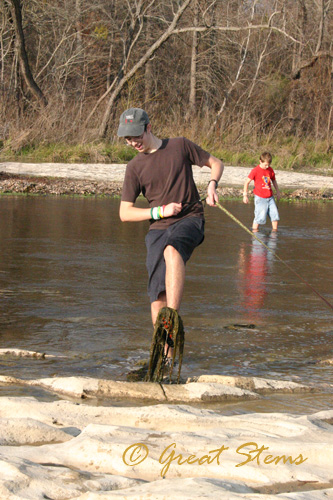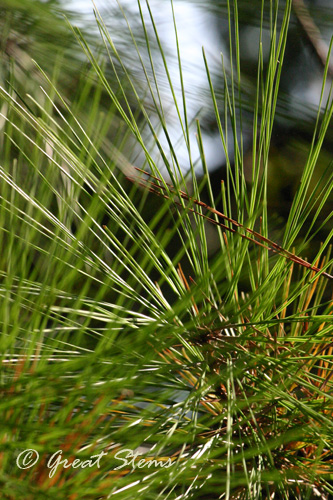 Yesterday morning our hiking crew of friends and family visited McKinney Roughs Nature Center, an LCRA park near Bastrop in Central Texas. Not to be confused with McKinney Falls State Park, the Roughs is home to 18 miles of pleasant hiking trails that take one through peaceful woodlands, past wildflower meadows, and along the scenic Colorado River.
Yesterday morning our hiking crew of friends and family visited McKinney Roughs Nature Center, an LCRA park near Bastrop in Central Texas. Not to be confused with McKinney Falls State Park, the Roughs is home to 18 miles of pleasant hiking trails that take one through peaceful woodlands, past wildflower meadows, and along the scenic Colorado River.
The park is located where four distinct ecological regions converge: East Texas Pineywoods, Riparian, Blackland Prairies, and Post Oak Savannah, and these regions can seem to suddenly switch on you as you walk along the trails. I think of three words when I picture my time at McKinney Roughs — “beauty,” “solitude,” and “wildlife.” Birds, butterflies, bees, lizards, spiders, turtles, mammals — everywhere you turn, you either see wildlife, or you see evidence of it. Wildflowers line the paths, vines climb the trees, and sunlight filters through the trees to highlight shrubs or snags or other interesting elements of nature.
A little anole welcomed us at the front gate, though he did hang out among some thorns. Good for him.
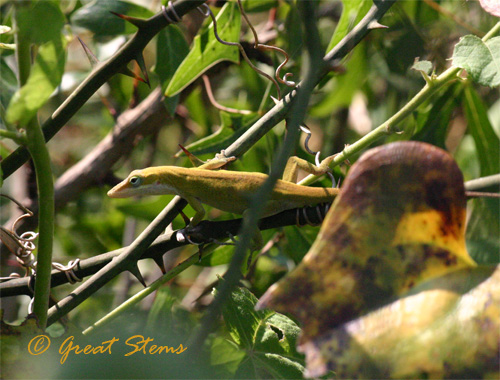
Up at the visitor’s center, spectacular flowers and berrying-plants provide a colorful scene, alive with zooming hummingbirds, busy bees, and fluttering butterflies. The building in the photo is the Natural Science Center, closed except for educational purposes, but all about the grounds, demonstration gardens teach visitors about native plants, wildscaping, and water conservation through rain collection. There’s even a tepee to sit in. And the visitor’s center itself holds large aquariums and terrariums, with all sorts of live creatures inside. So much to do, and so much to learn.
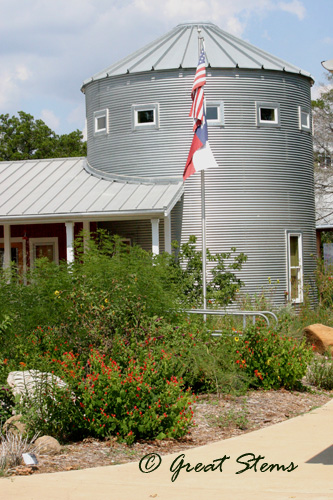
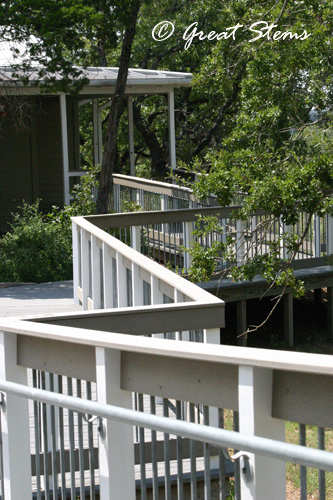
If all that wasn’t enough, McKinney Roughs offers even more– nature programs for youths, dorms for groups, stargazing and kayaking programs, and vertical challenge courses, including a climbing tower.
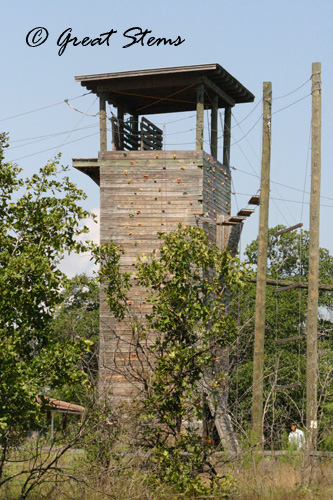 But the park trails are truly the “diamonds in the Roughs.” They are well made and easy to traverse. Dogs on leashes are allowed, as are horses. It says something good about a park when people bring their horses from across the state to take them on the trails.
But the park trails are truly the “diamonds in the Roughs.” They are well made and easy to traverse. Dogs on leashes are allowed, as are horses. It says something good about a park when people bring their horses from across the state to take them on the trails.
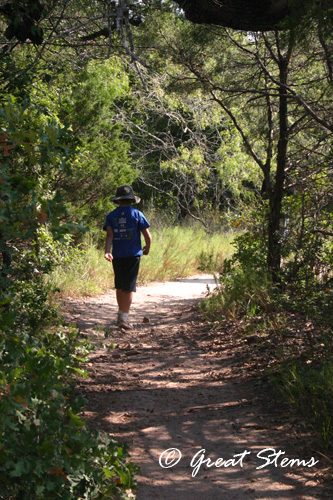 We chose about a 5-mile route, traveling on several connecting trails. The paths took us through all four ecological regions, letting us see quite a variety of plant species and terrain. Pine needles in portions reminded us when we were in the pocket of isolated hardwoods known as “Lost Pines.”
We chose about a 5-mile route, traveling on several connecting trails. The paths took us through all four ecological regions, letting us see quite a variety of plant species and terrain. Pine needles in portions reminded us when we were in the pocket of isolated hardwoods known as “Lost Pines.”
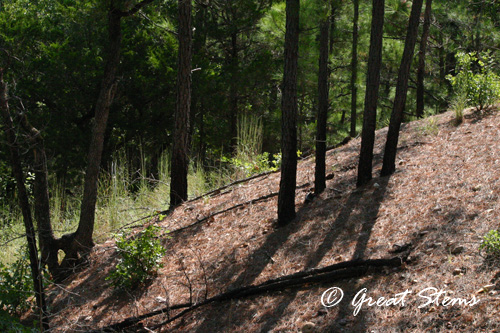
The paths took us to overlooks and valleys, dry creek beds and the river, and through woods and meadows, but always the trail was well defined and constructed, particularly whenever a slope was present.
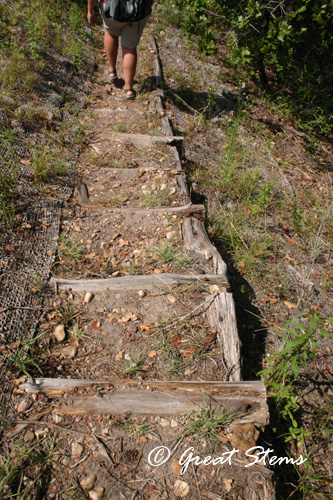
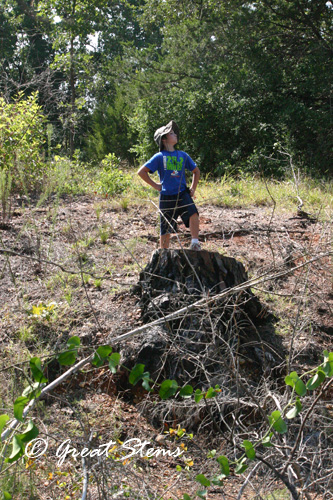 Ant lions left little pits in the sand along the paths.
Ant lions left little pits in the sand along the paths.
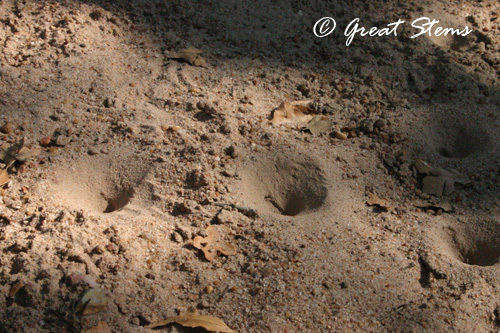 All around were plants I’d never seen before, and I realized that while I can identify many native species, it was clear I had a lot more to learn. But many of my favorites were around.
All around were plants I’d never seen before, and I realized that while I can identify many native species, it was clear I had a lot more to learn. But many of my favorites were around.
Like American Beautyberry…
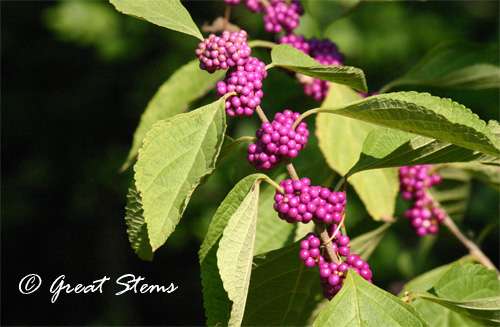
Texas Persimmon, with its beautiful peeling bark…
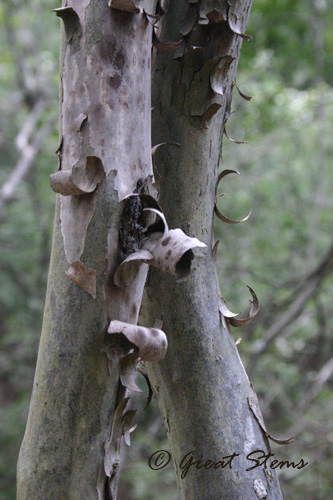
Inland Sea Oats, with seeds in transition from green to brown, and so many others.
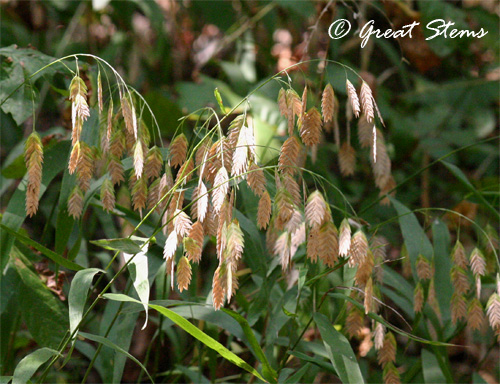
While I could identify this next plant as a bird-friendly Pokeweed due to its very dark red berries, I didn’t know much about it, so I looked it up. Turns out it’s very dangerous to mammals, sometimes even lethal — so don’t eat it. This is a time where the saying “You eat like a bird” best NOT apply.
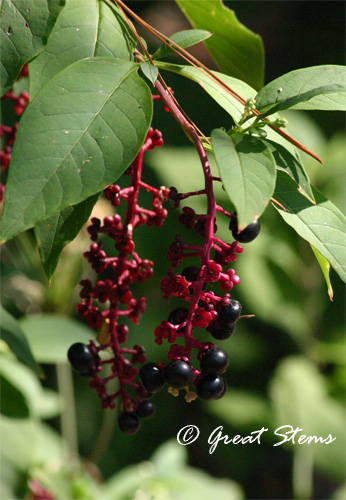
Another new one for me — this appears to be Tall Gayfeather, also known as Tall Blazing Star, Liatris aspera. The stalk was indeed so tall that it needed the support of a younger plant.
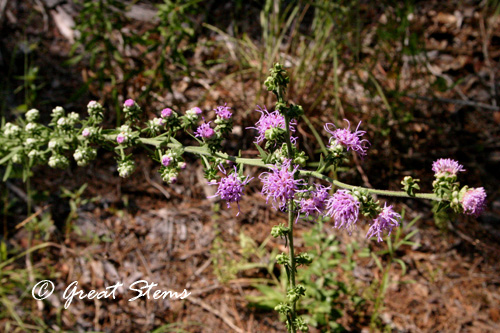
And this is Coral Bean, Erythrina herbacea. Thank goodness it didn’t have different colored seeds — I might not have ever identified it otherwise. Not surprisingly, those beans are toxic.
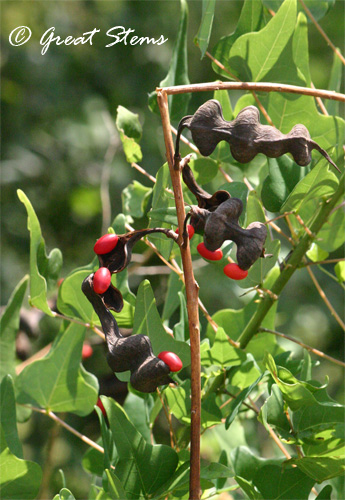
It was hard to resist taking pictures of all the wildlife we saw. And ohhhh, we saw a lot. What a joy to experience nature at its best.
Near the visitor’s center, this Pipevine Swallowtail butterfly worked really hard to make it as difficult as possible for me to take a picture of it, but I finally got one. It’s on Pride of Barbados — not a true native, but a sun-loving wildlife-friendly neighbor from the south.
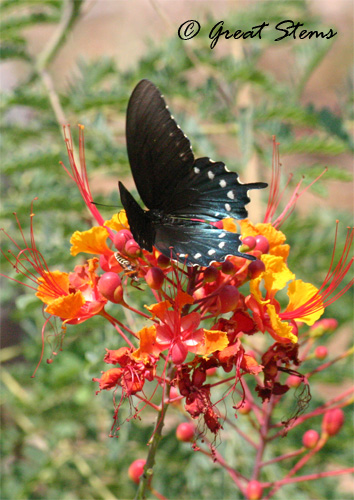
Well, actually I did get two photos. I believe this is another Pipevine Swallowtail, though its markings are less vibrant. It’s on Tropical Milkweed.
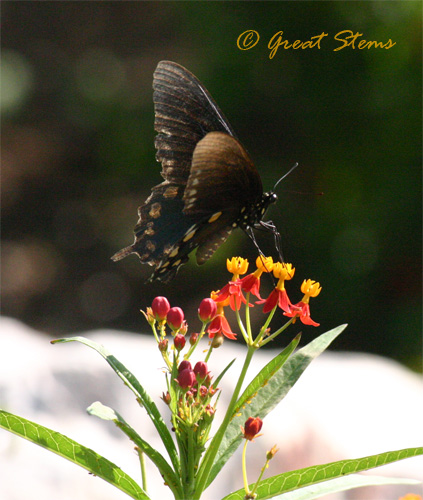 It was pretty neat to see so many different species of Swallowtails all in the same vicinity. Here’s an Eastern Tiger Swallowtail.
It was pretty neat to see so many different species of Swallowtails all in the same vicinity. Here’s an Eastern Tiger Swallowtail.
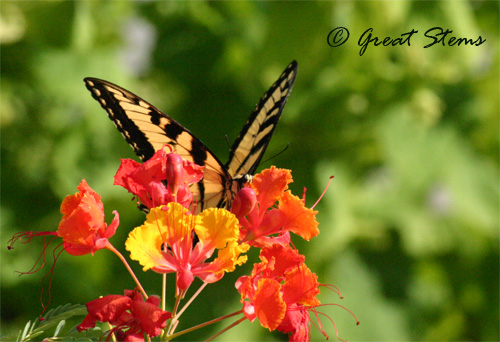
And a good old-fashioned Black Swallowtail on Texas Lantana.
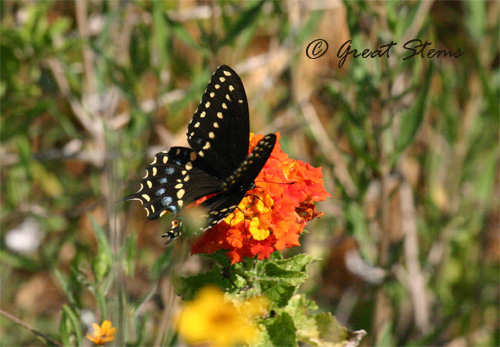 Nearby, a Gulf Fritillary drank from a Turk’s Cap.
Nearby, a Gulf Fritillary drank from a Turk’s Cap.
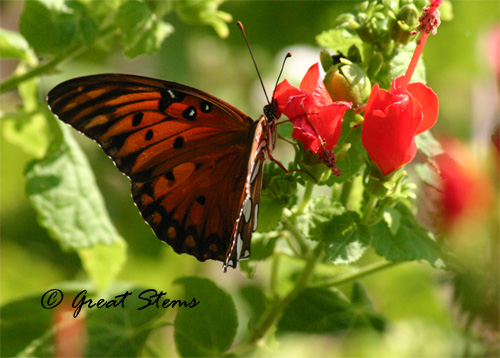 Off in the woods, a pollinator favorite was Shrubby Boneset, or White Mistflower. Bees and butterflies all flocked to it.
Off in the woods, a pollinator favorite was Shrubby Boneset, or White Mistflower. Bees and butterflies all flocked to it.
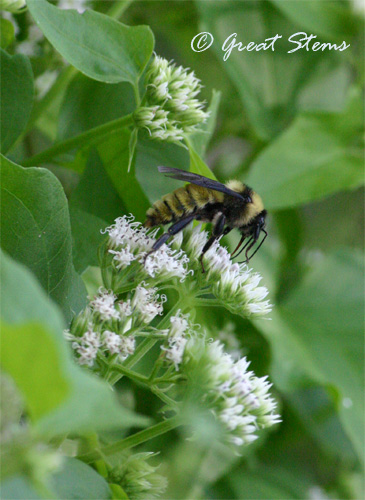
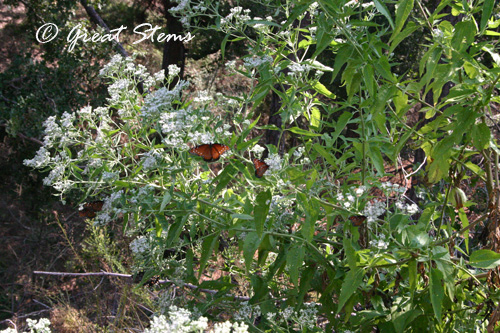
Here’s an Eastern Tiger Swallowtail Female, a dark morph.
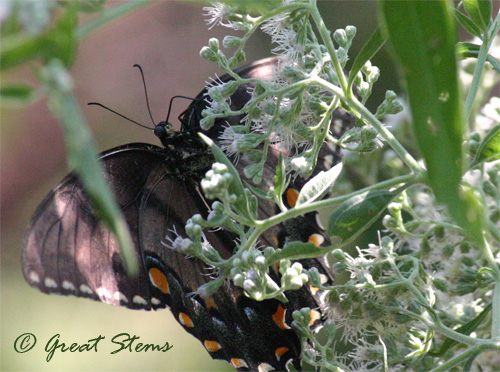
And, of course, the Mistflower-loving Queen.
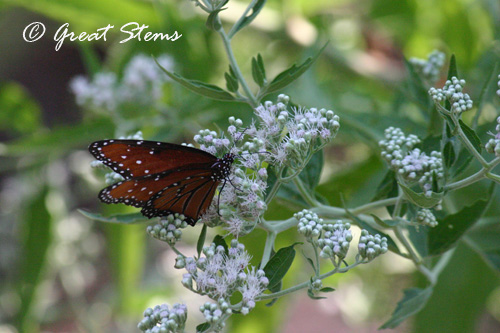 But Mistflower wasn’t the only plant the pollinators loved.
But Mistflower wasn’t the only plant the pollinators loved.
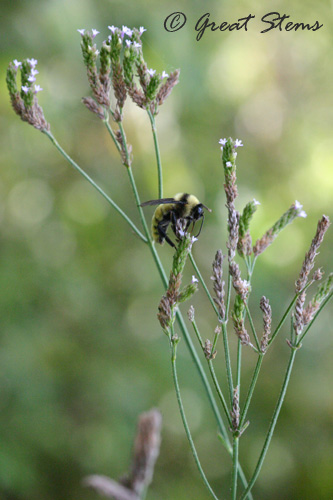
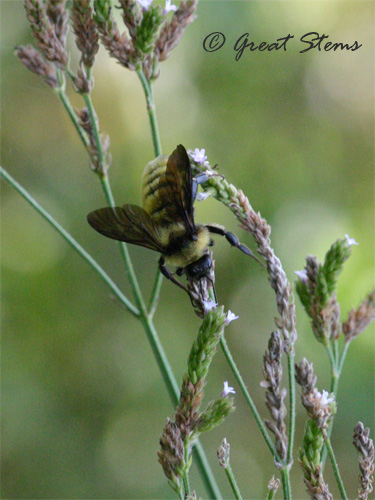 Solitary wasps collected nectar and pollen, as well. This digger wasp is a wonderful predator of grasshoppers and katydids. I wish it lived at my house.
Solitary wasps collected nectar and pollen, as well. This digger wasp is a wonderful predator of grasshoppers and katydids. I wish it lived at my house.
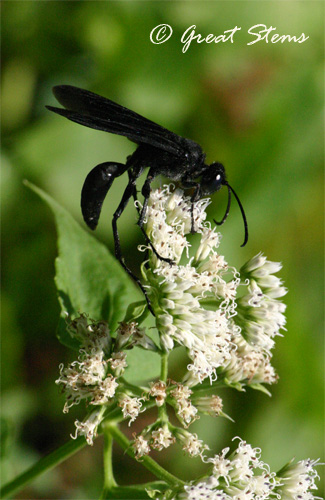
This black-and-white wasp is a Mason Wasp, Monobia quadridens.
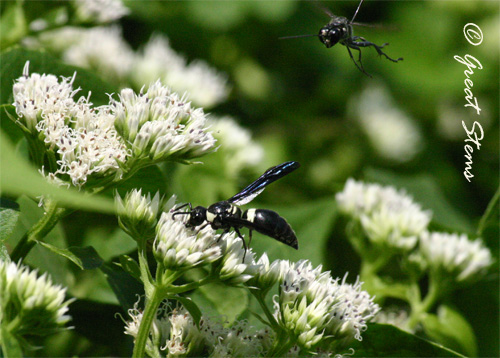 Down at the river, we soaked our feet in the cool flowing waters.
Down at the river, we soaked our feet in the cool flowing waters.
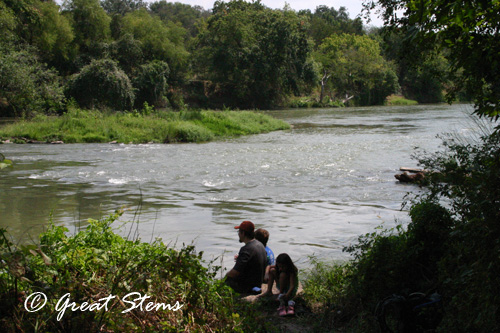 We weren’t alone — fishing birds fished, bumblebees bumbled. And damselflies joined us at the water’s edge, often resting on our feet and toes. This American Ruby Spot stood out among the more common blue-bodied damsels.
We weren’t alone — fishing birds fished, bumblebees bumbled. And damselflies joined us at the water’s edge, often resting on our feet and toes. This American Ruby Spot stood out among the more common blue-bodied damsels.
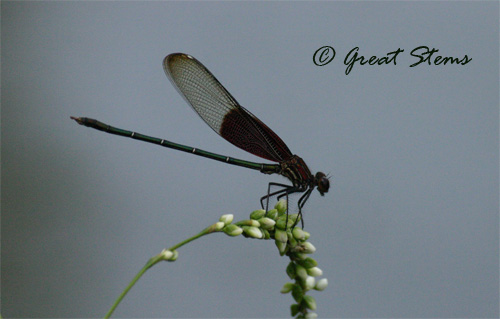
That’s just the perfect shade of green on its body to go with the red on its wings.
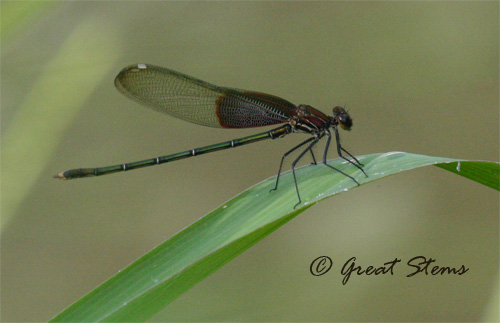 A water bug army showed off surface tension physics at its finest.
A water bug army showed off surface tension physics at its finest.
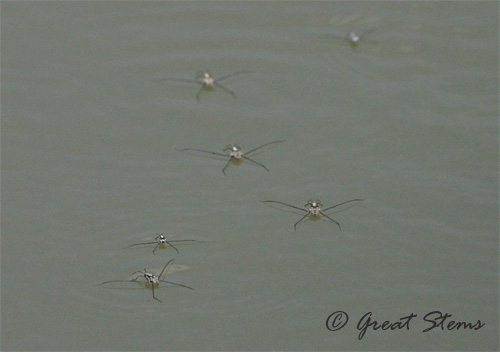 We lingered awhile at the river, taking the time to rest and eat a few snacks. Then it was back on the trail.
We lingered awhile at the river, taking the time to rest and eat a few snacks. Then it was back on the trail.
Occasionally we had to dodge and duck under cobwebs that stretched across paths. But with them we sometimes found beautiful spiders, many of them orange Spiny-Backed Orb Weavers. But the larger garden spiders stole the show, I’m afraid. Big, beautiful, and very, very still. This lovely lady is an Argiope aurantia. She posed for many views. Interestingly, her web also held a male spider (missing one leg) and several baby Argiope spiders. It really surprised me that she would be so tolerant of other spiders on her web. Well, perhaps not so tolerant of the male, obviously…
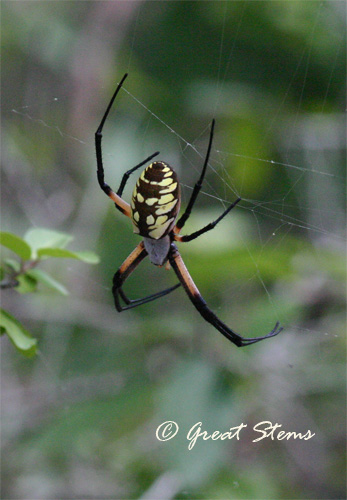
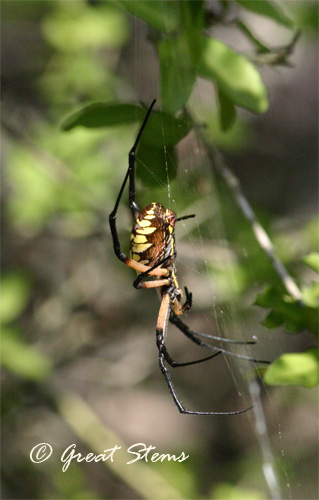
The view of her underside looks enough like the parasitic Alien facehugger to give even me the creeps. But she’s utterly fascinating — look at the way she positions herself on her own web strands. Do you see the tension she holds on select threads? Poised and ready to nab any creature who foolishly gets too close to her web…
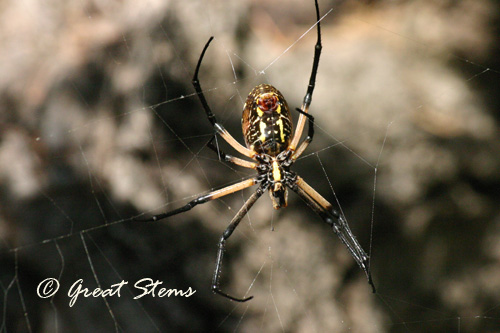
Argiope aurantia has another name than just Garden Spider. It’s also known as the Writing Spider, named for the zig-zags it makes in its webs, seen in this view of a different female.
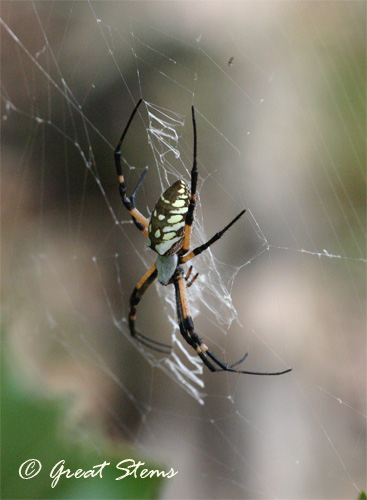 Not to be outdone, other spiders at the Roughs created spectacular tunnel webs and dense webs that seemed almost like blankets.
Not to be outdone, other spiders at the Roughs created spectacular tunnel webs and dense webs that seemed almost like blankets.
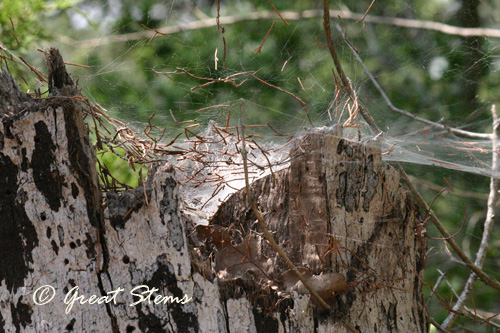
At last we made it back to the visitor’s center, finishing our trip with a tour of the aquariums and terrariums. And after our hike, we enjoyed a late lunch at the Roadhouse in Bastrop. Great food. I had to skip dinner, I was so full.
McKinney Roughs has become one of my favorite parks in Texas. I’m so glad it’s close to Austin, as I know we’ll enjoy going back. Next time we’ll be sure to take our dogs with us. If you are in the vicinity, it’s a trip worthwhile.
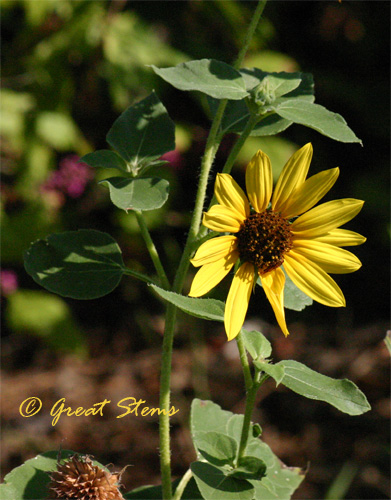
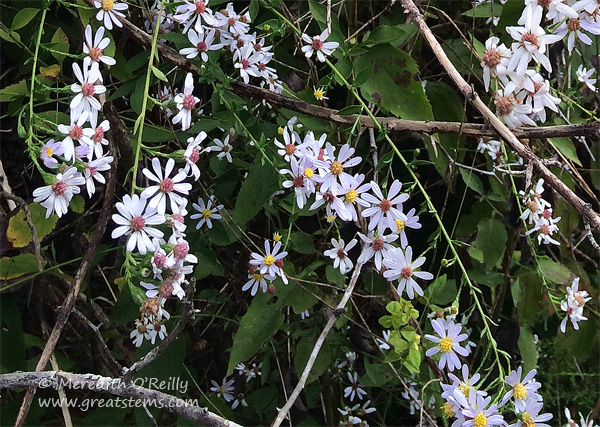
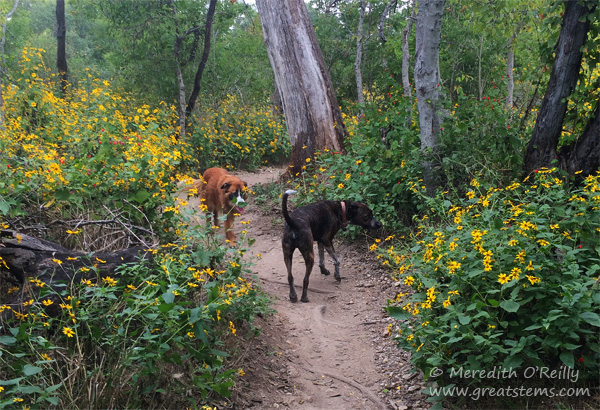
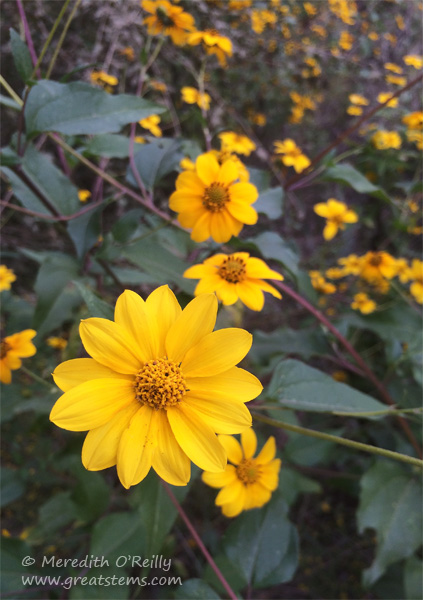
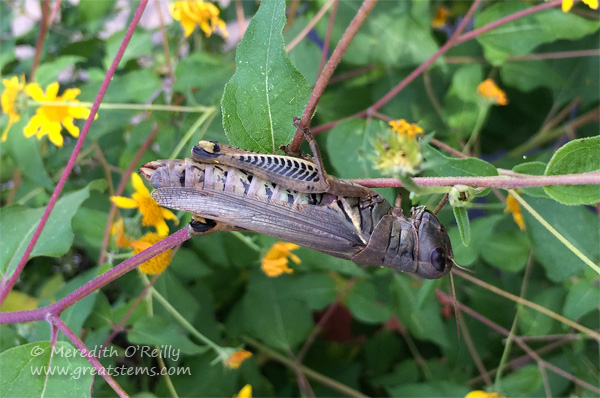
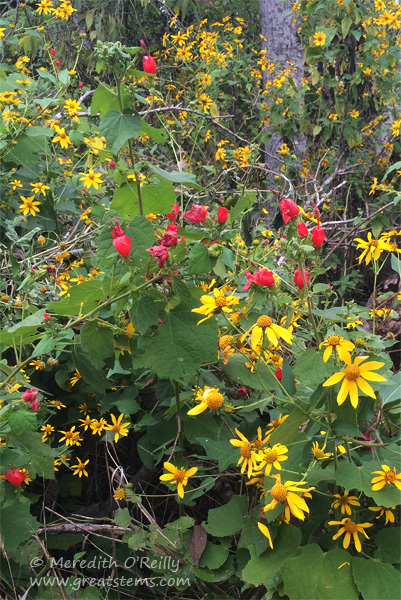
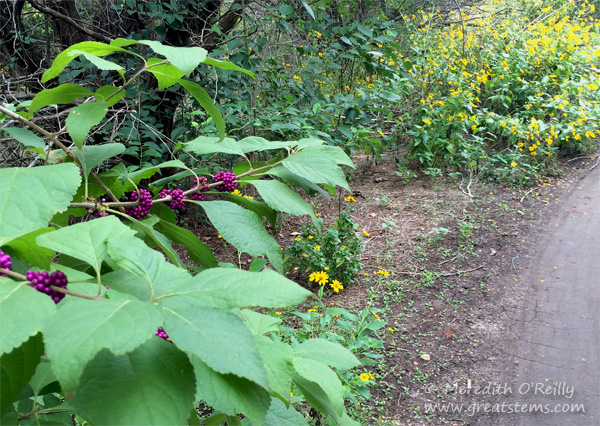
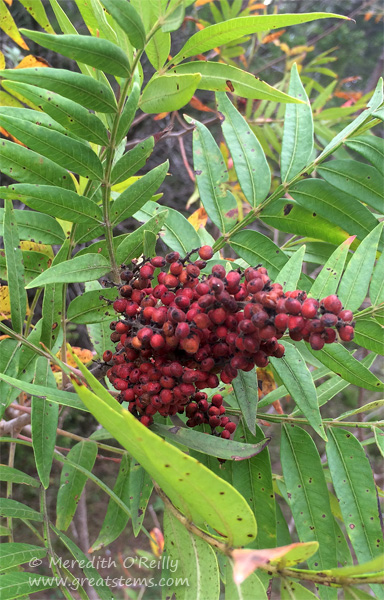
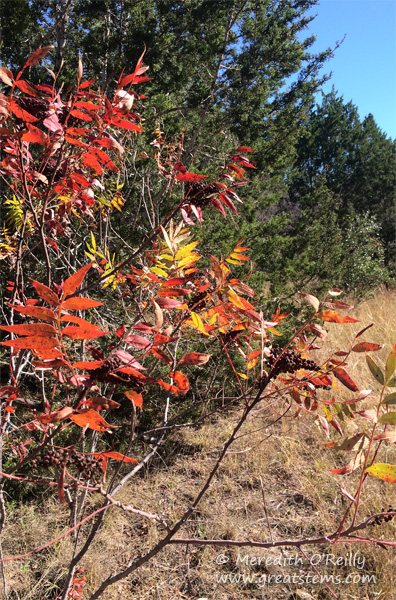
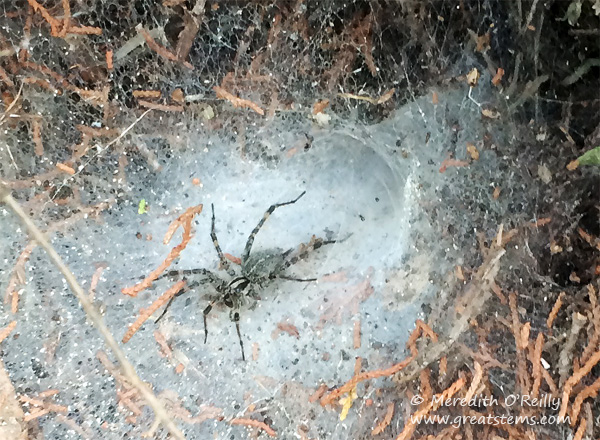
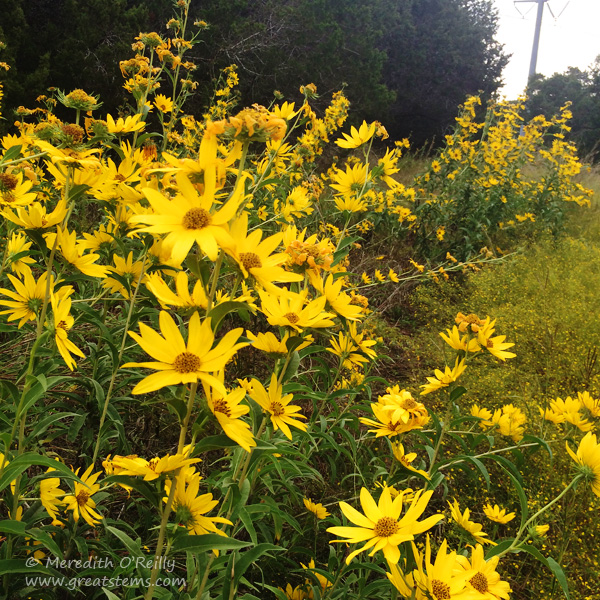
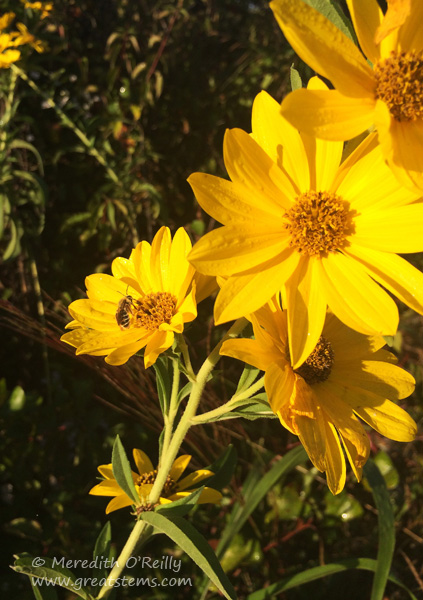
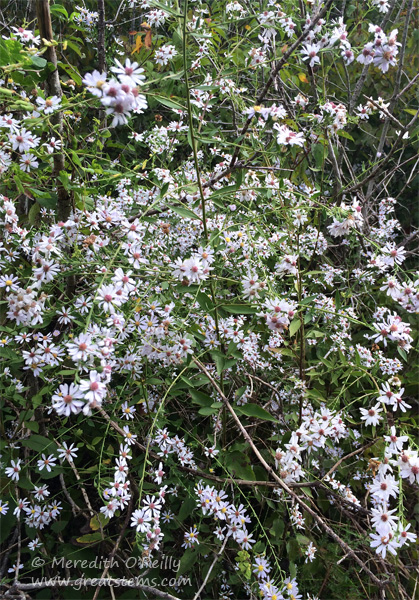
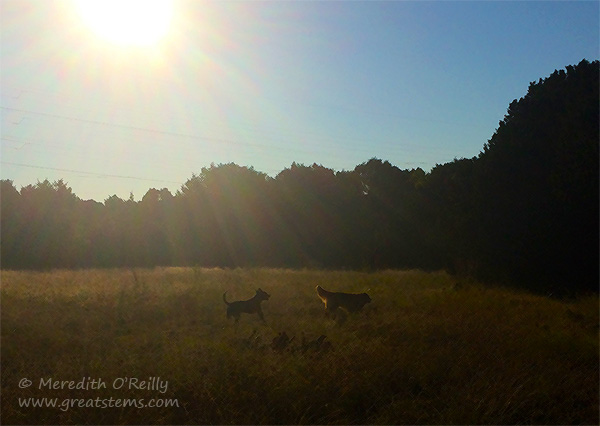
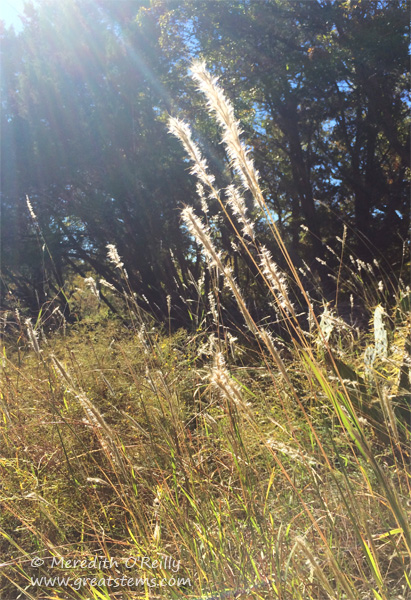

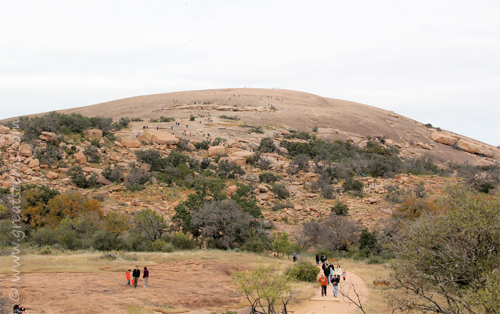
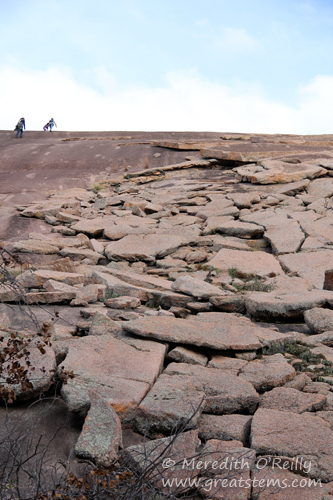
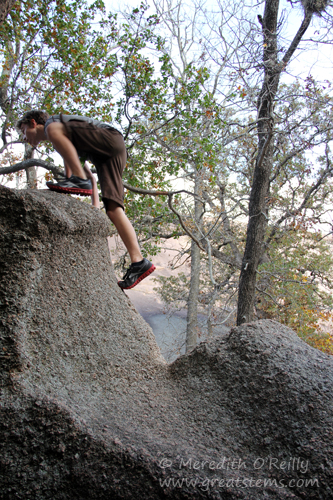
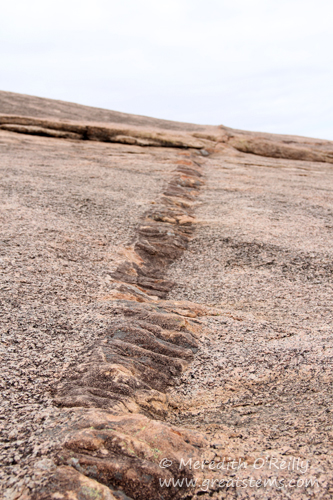

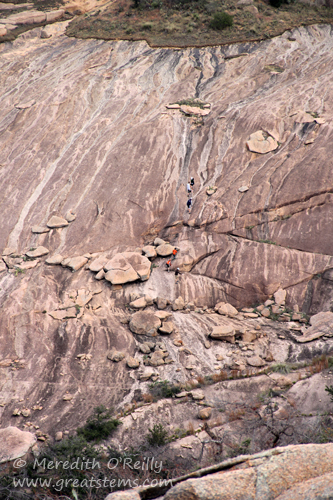
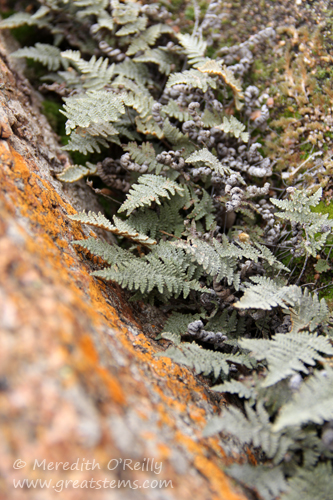
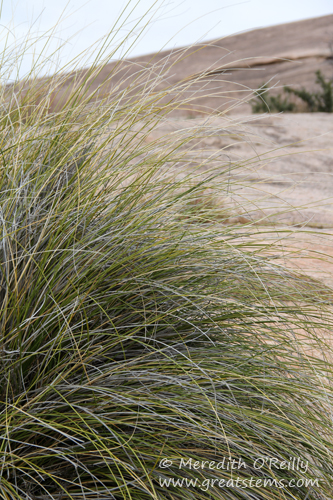
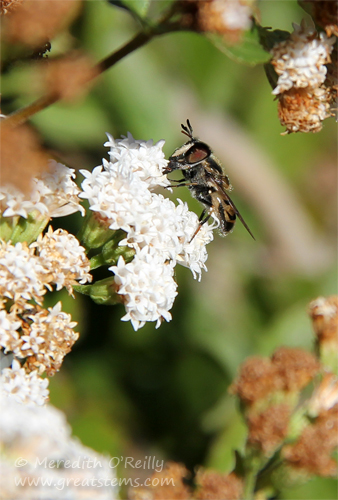
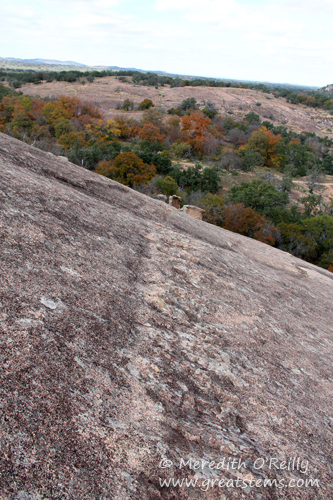
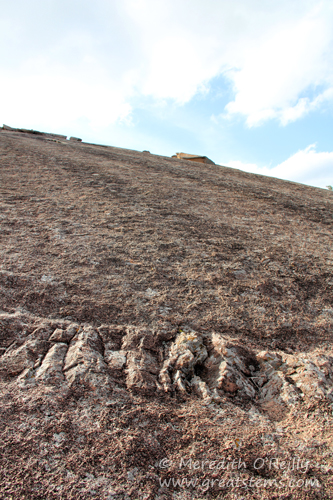
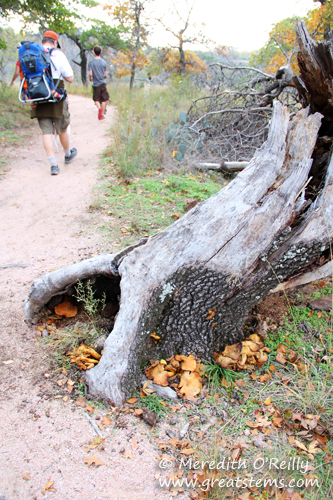
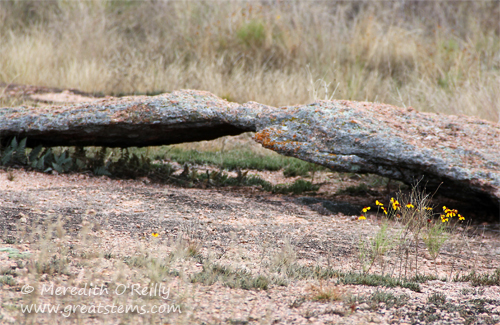
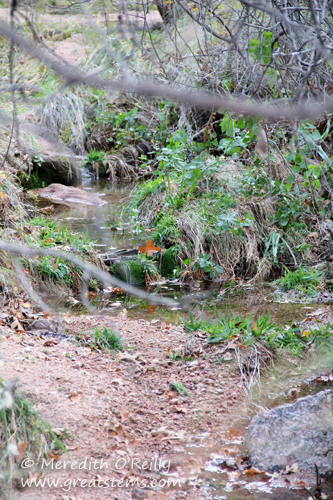
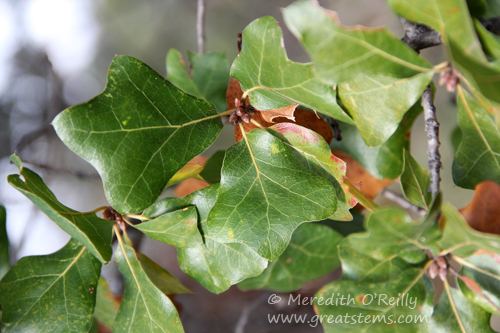
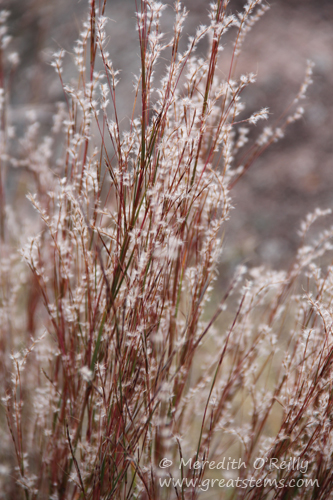
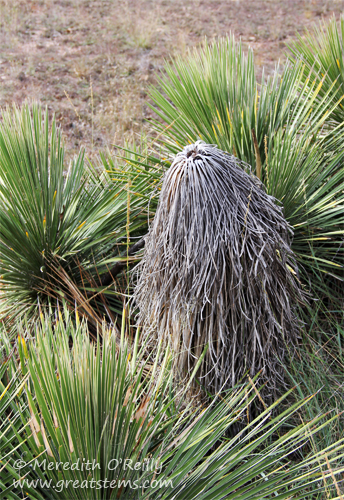 This dead yucca plant surrounded by its living family brings to mind Cousin Itt.
This dead yucca plant surrounded by its living family brings to mind Cousin Itt.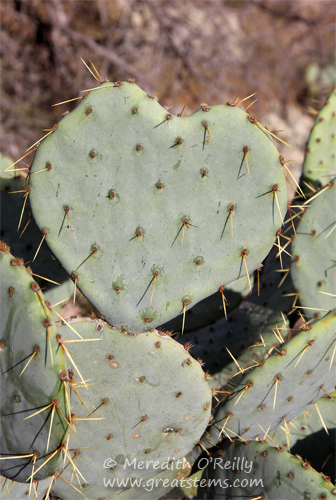
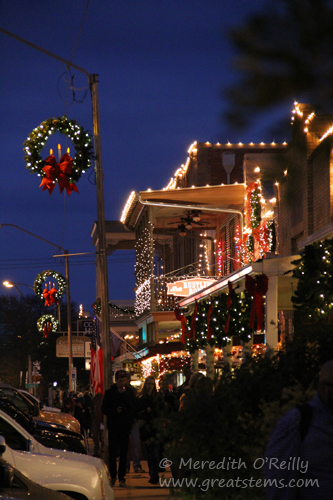

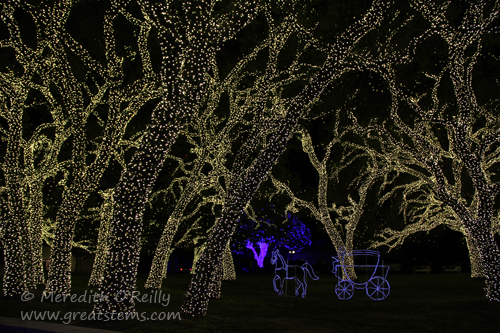
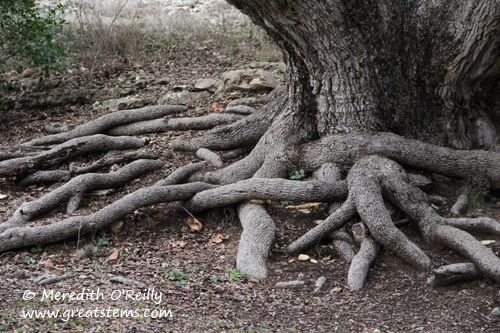
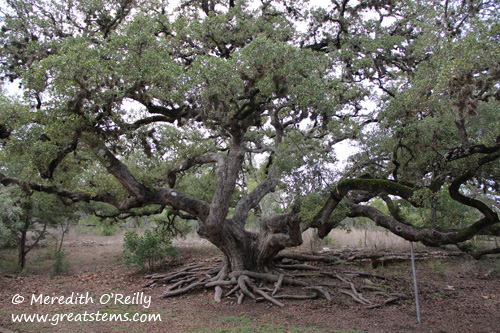
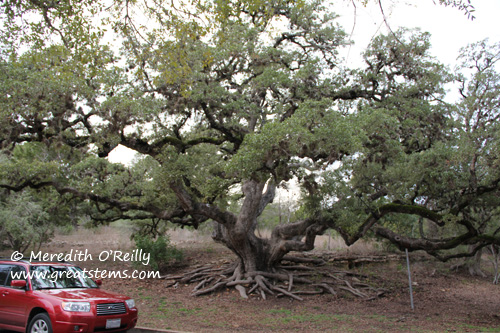
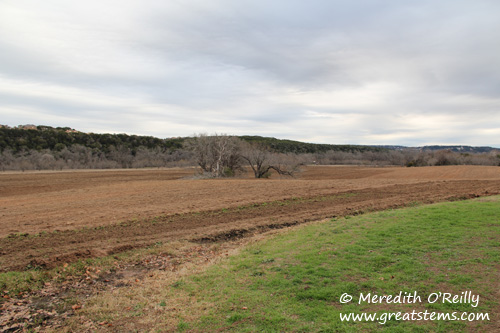
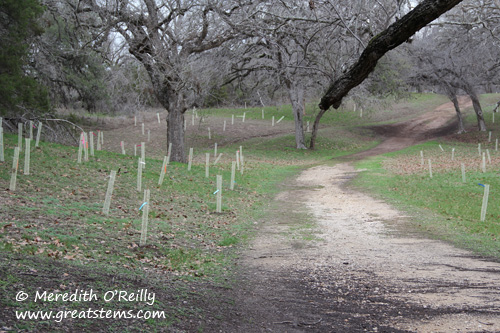
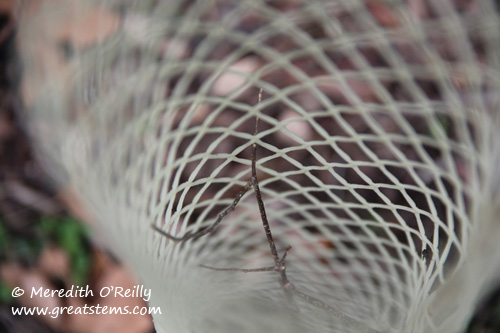
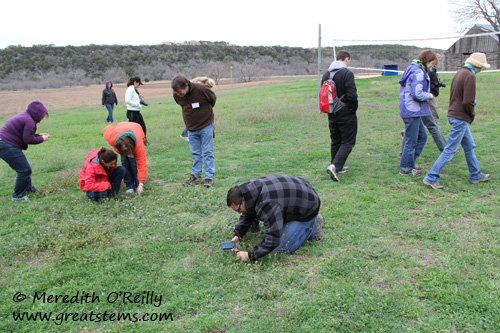
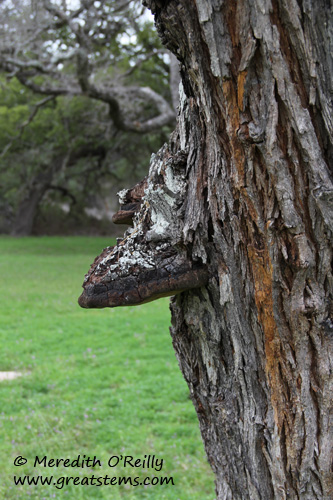
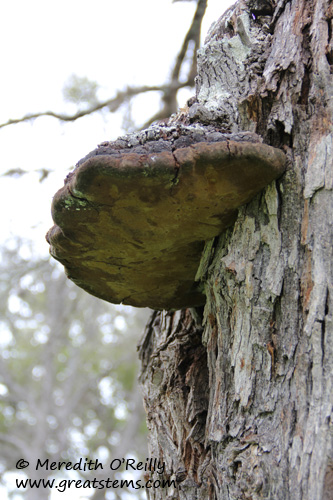
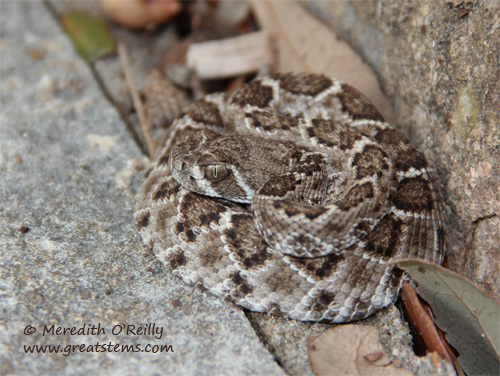
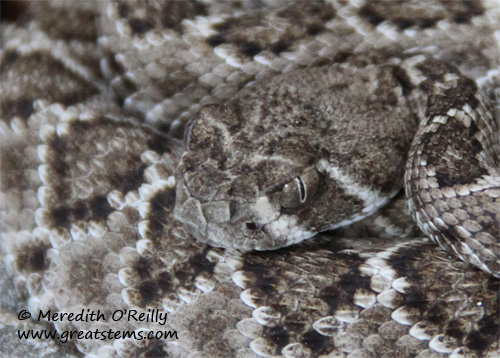
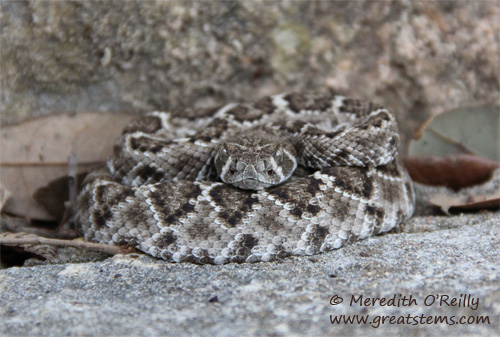
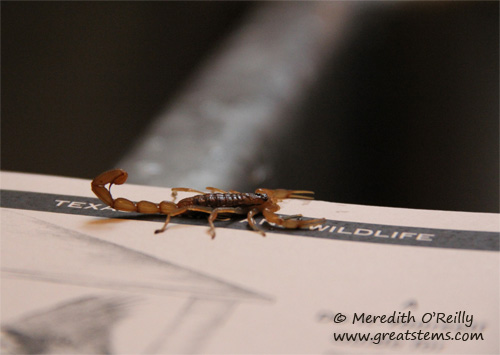
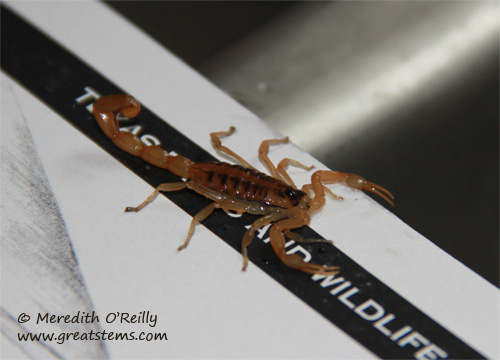
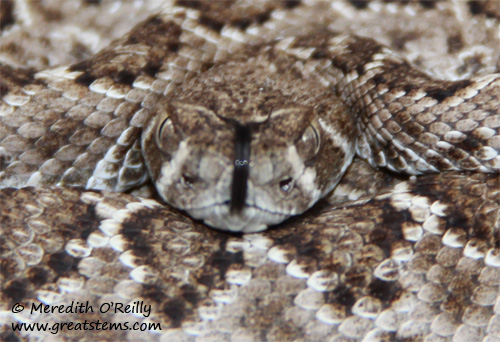
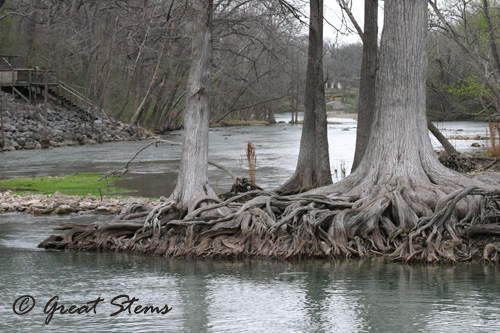
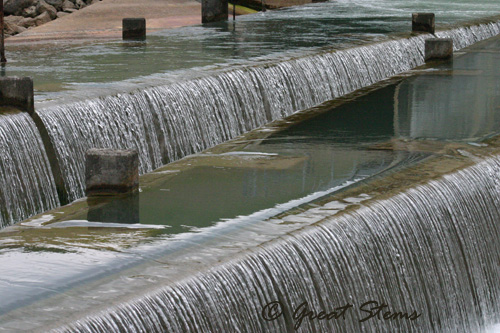
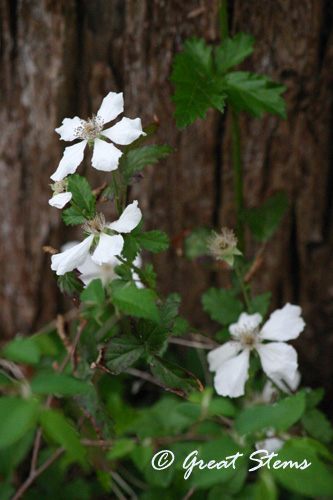
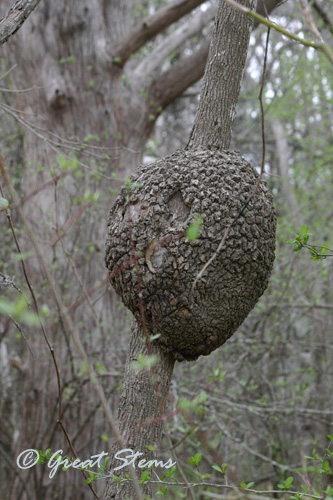
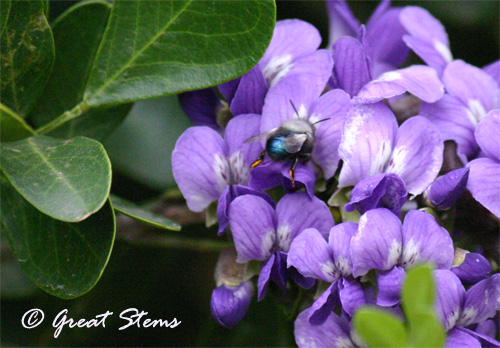
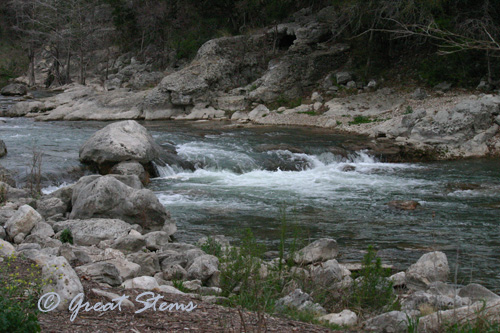
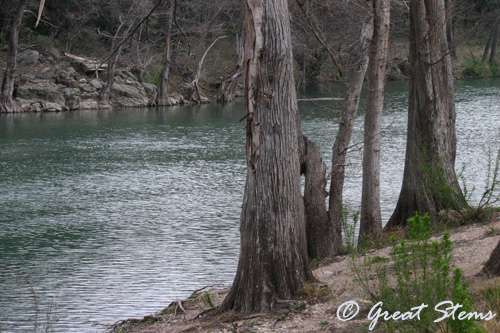

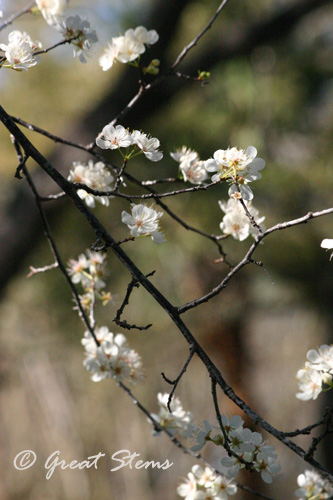
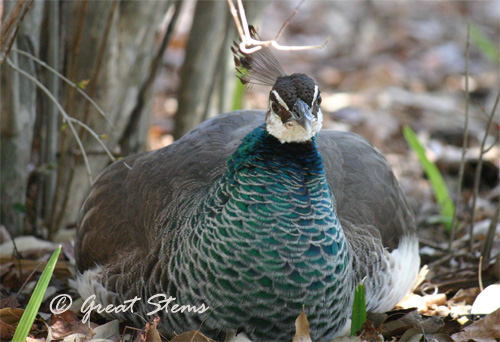 My family and I stopped by the park last week to visit the grounds’ peacocks and cottage garden. Much of the plant life was still waking up after its winter sleep , with just the tiniest of buds present during our visit, but early bloomers were kind enough to welcome us with color, including the fragrant Mexican plum above, and the vibrant redbud below. For more information on the delightful pink blooms around Austin, please visit my
My family and I stopped by the park last week to visit the grounds’ peacocks and cottage garden. Much of the plant life was still waking up after its winter sleep , with just the tiniest of buds present during our visit, but early bloomers were kind enough to welcome us with color, including the fragrant Mexican plum above, and the vibrant redbud below. For more information on the delightful pink blooms around Austin, please visit my 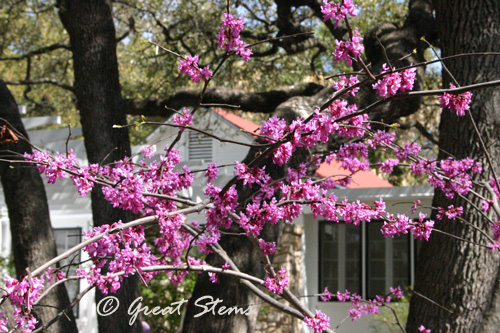
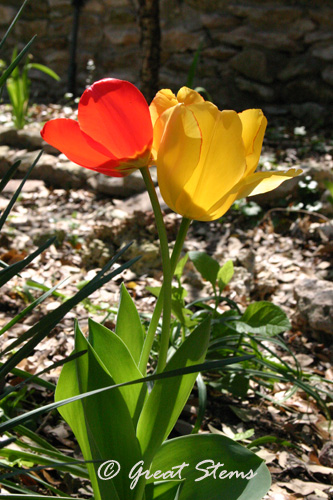
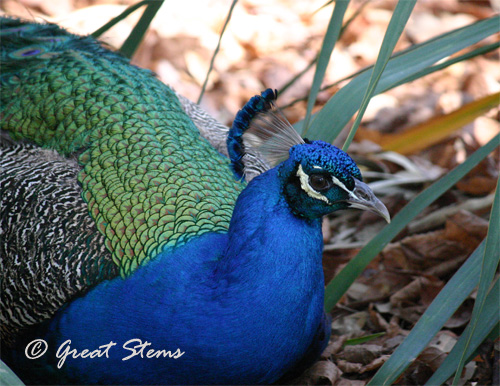
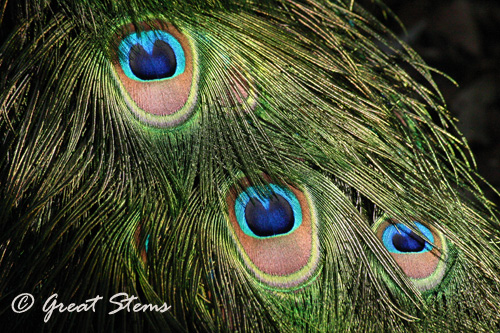
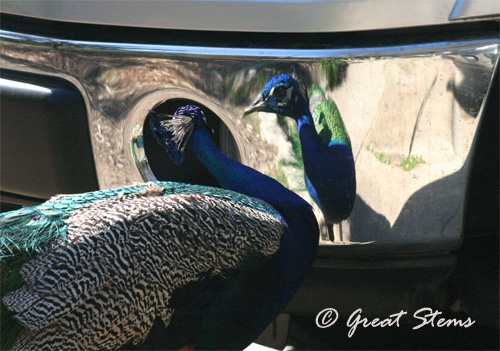
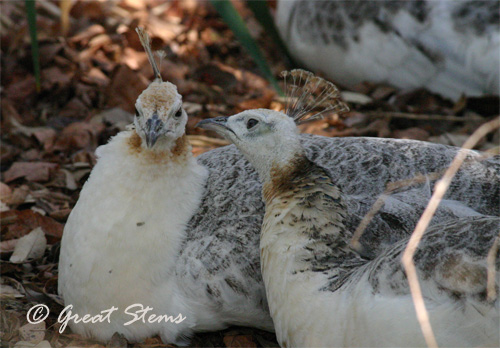
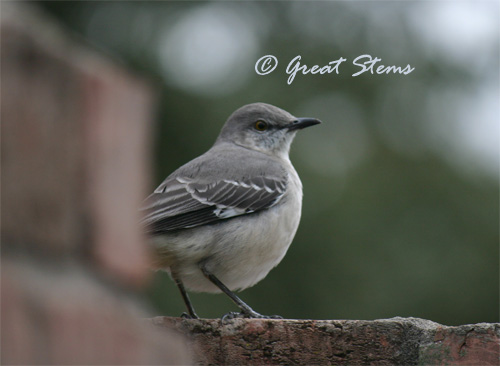
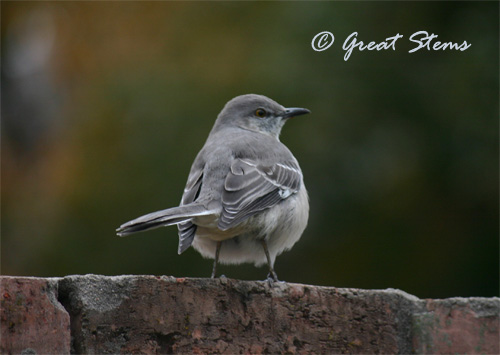
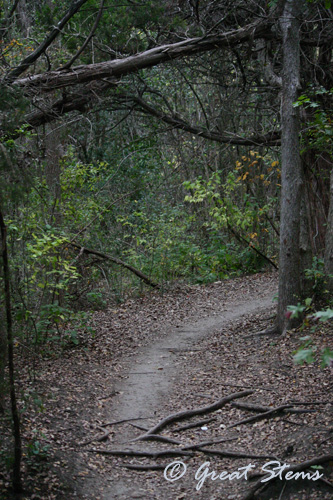
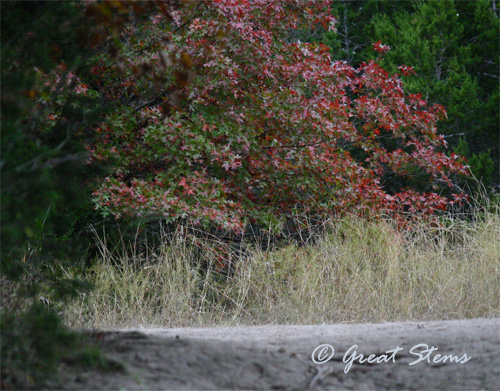
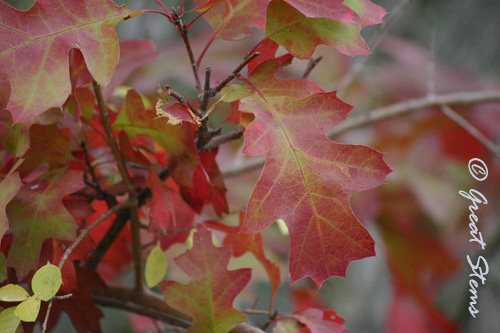
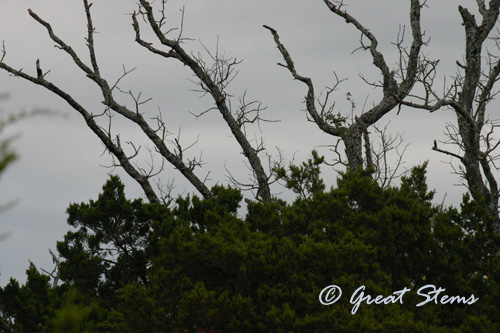
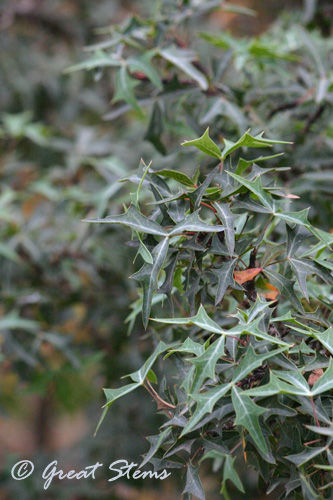
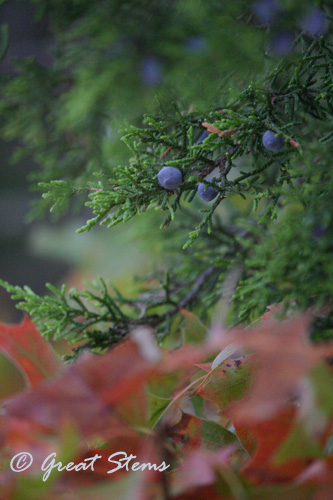
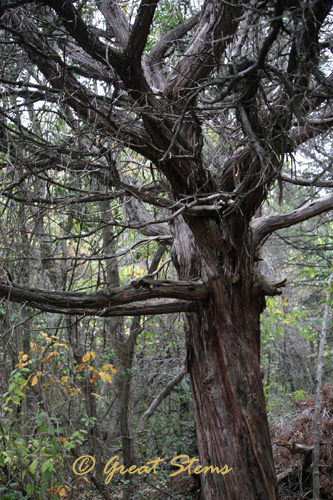
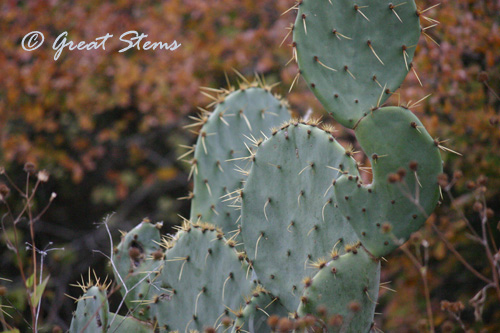
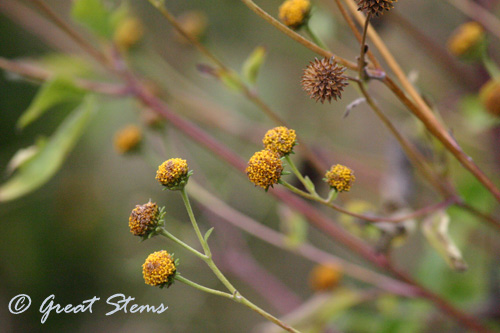
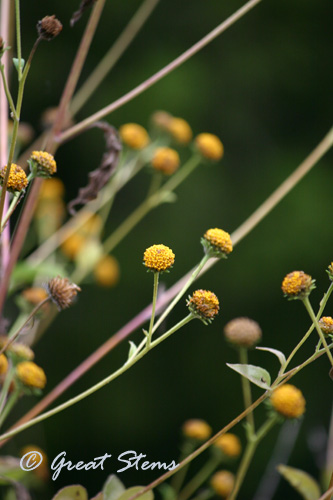
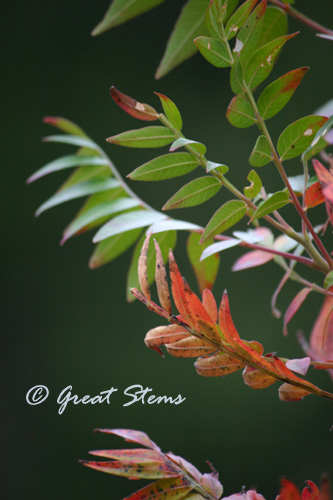
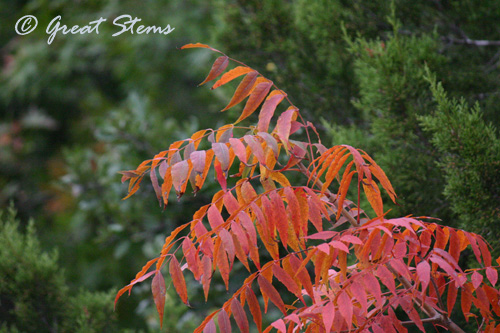
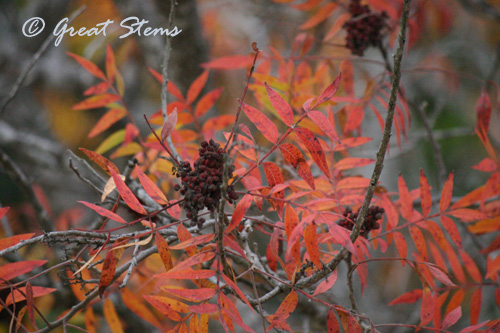
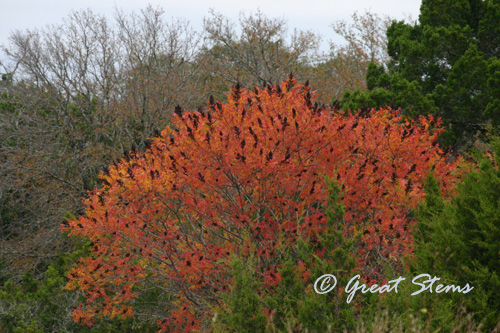
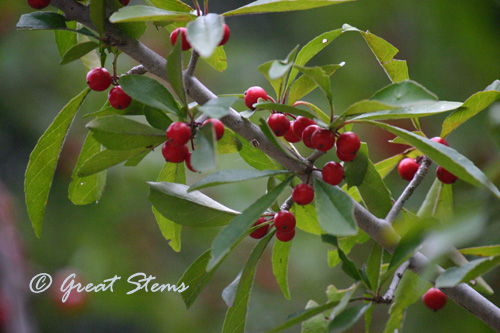
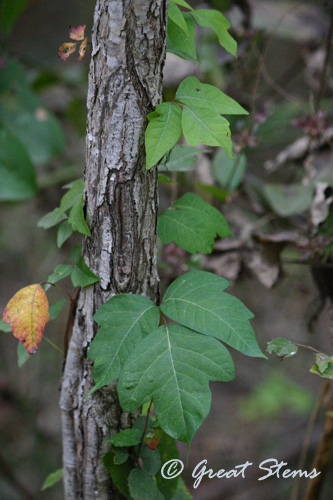

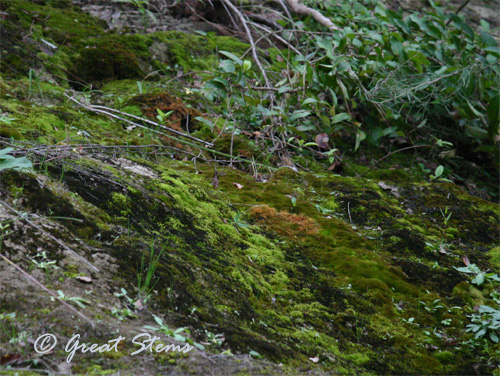
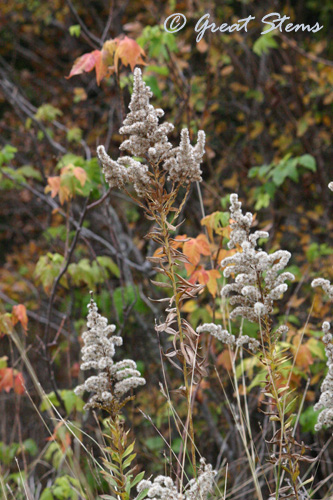
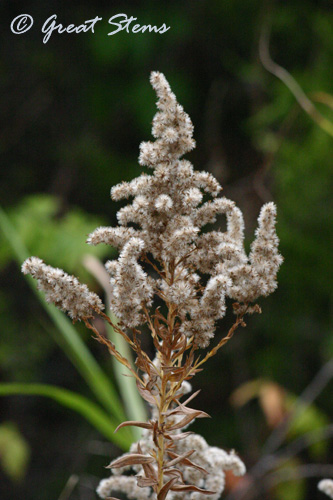
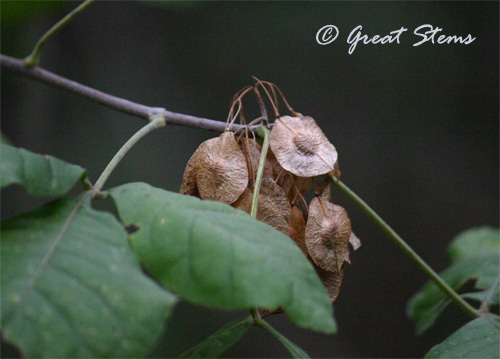
 Yesterday morning our hiking crew of friends and family visited
Yesterday morning our hiking crew of friends and family visited 


































 Not to be outdone, other spiders at the Roughs created spectacular tunnel webs and dense webs that seemed almost like blankets.
Not to be outdone, other spiders at the Roughs created spectacular tunnel webs and dense webs that seemed almost like blankets.

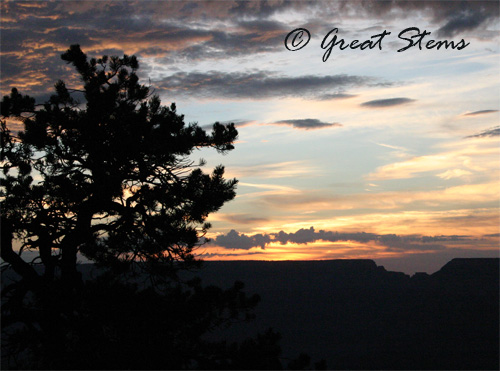
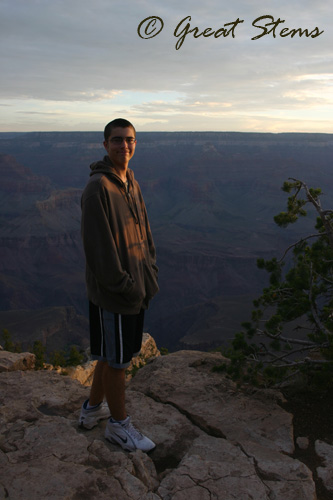
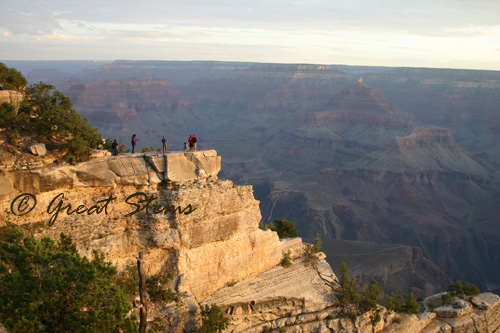
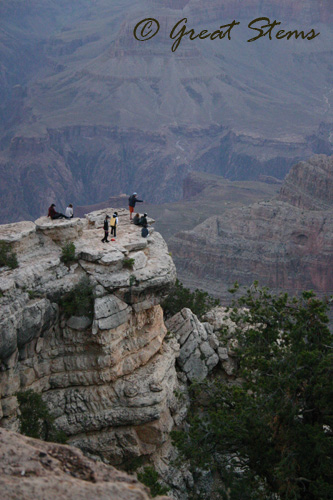
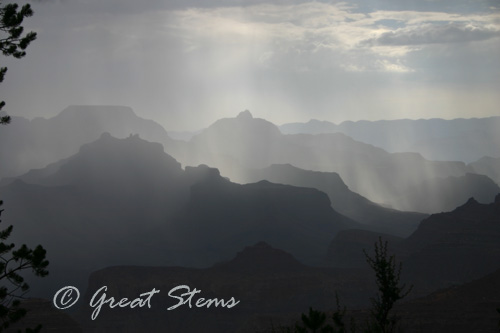
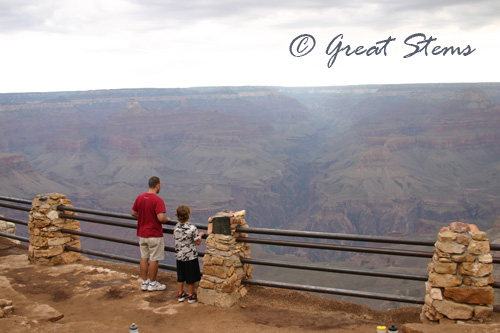
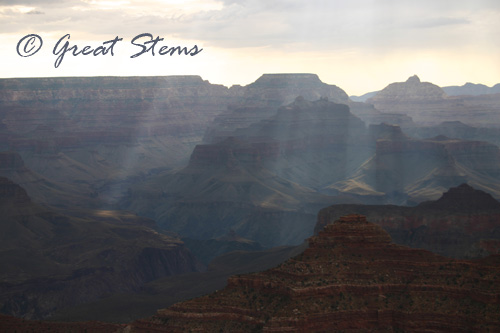
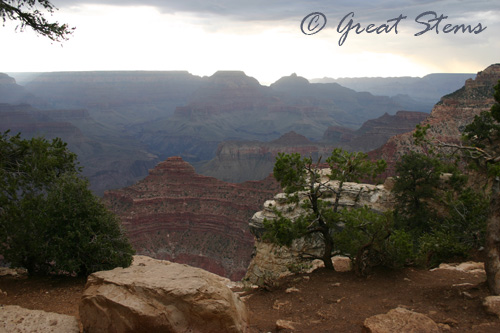
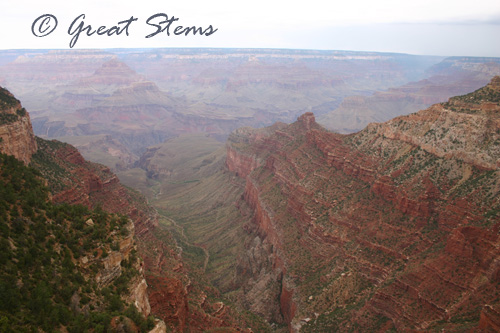
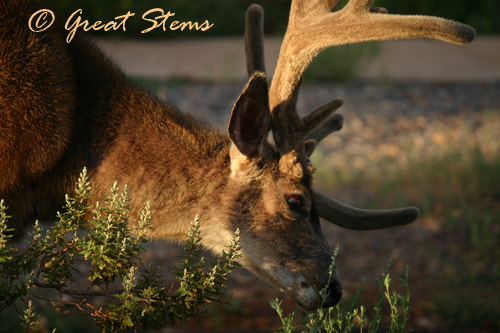
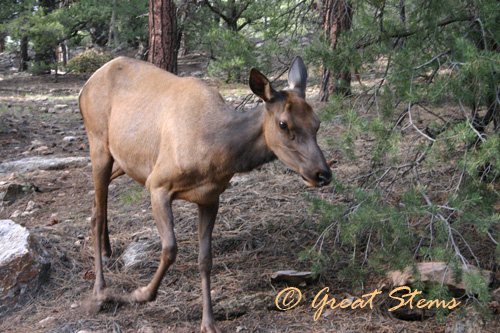 The ravens are huge and very, very black. They are considered some of the most intelligent birds, and you can tell that in the way they look at you and ponder how best to deal with you and/or your food. It amazes me that these heavy birds can even fly, and it amuses me further to see them hover against a breeze mere feet from the human watching them.
The ravens are huge and very, very black. They are considered some of the most intelligent birds, and you can tell that in the way they look at you and ponder how best to deal with you and/or your food. It amazes me that these heavy birds can even fly, and it amuses me further to see them hover against a breeze mere feet from the human watching them.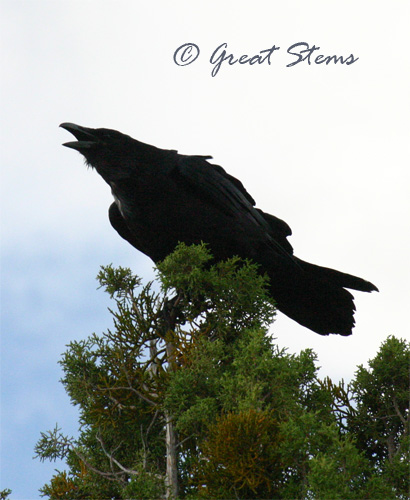
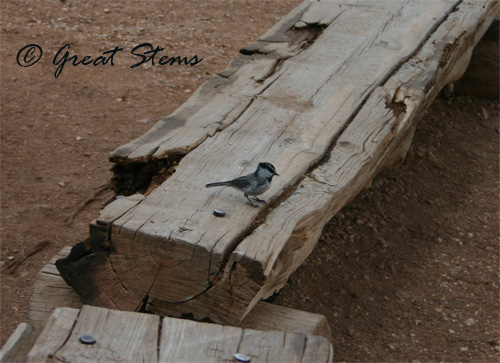
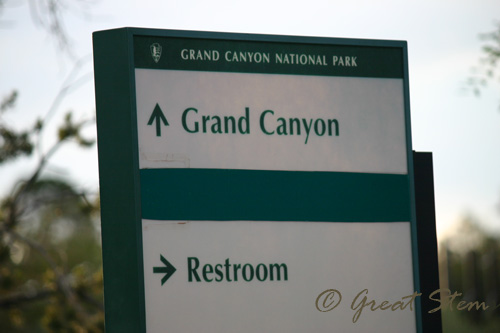
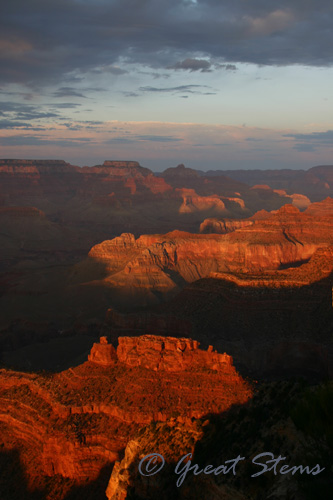
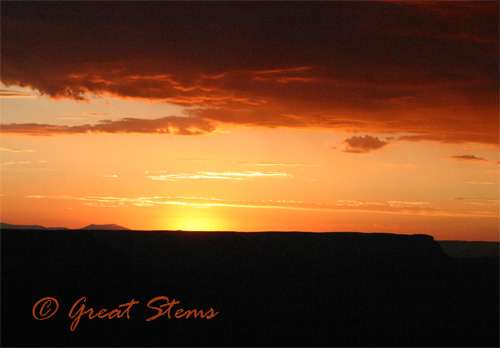
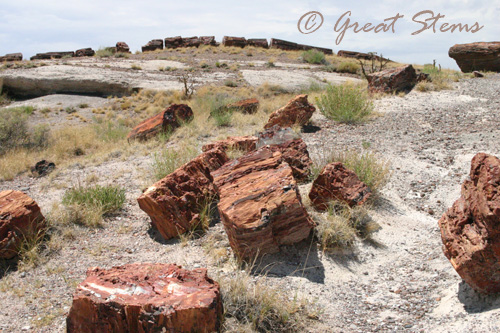
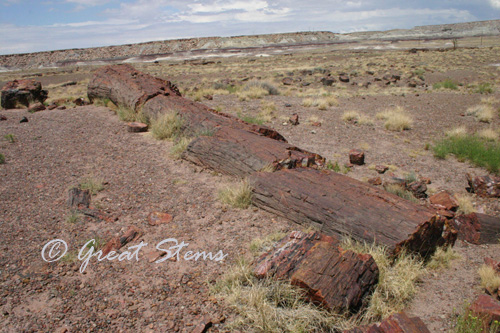
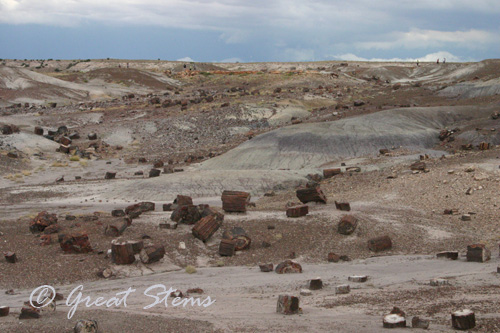
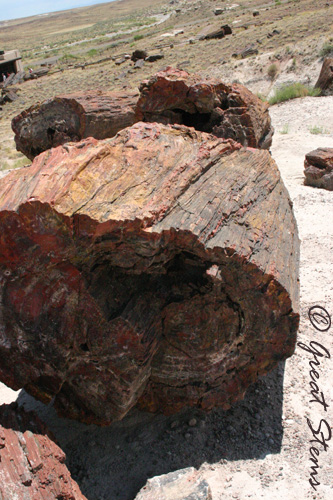
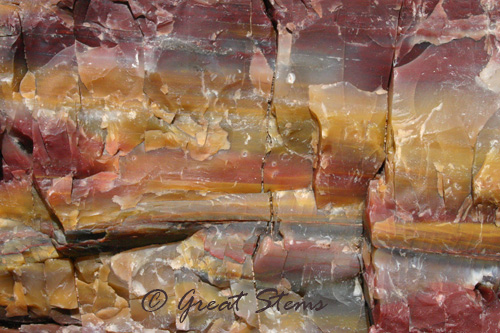
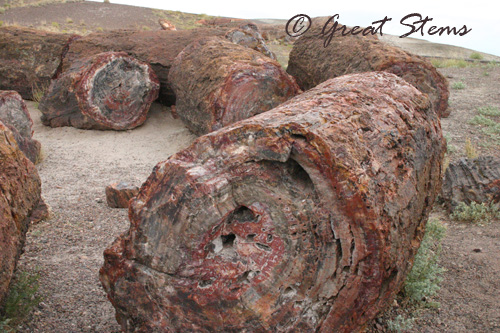
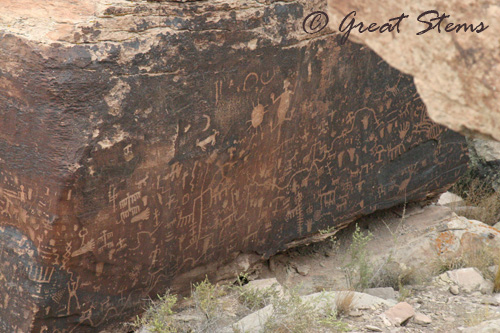

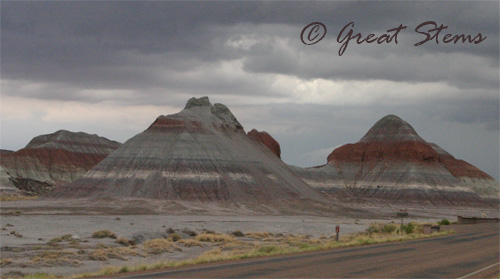
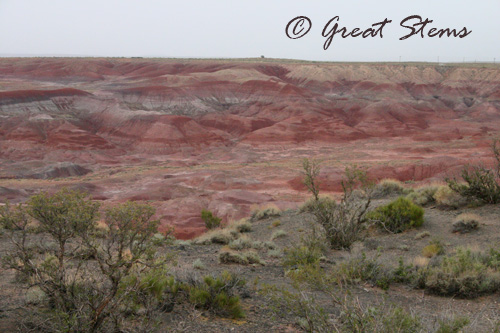
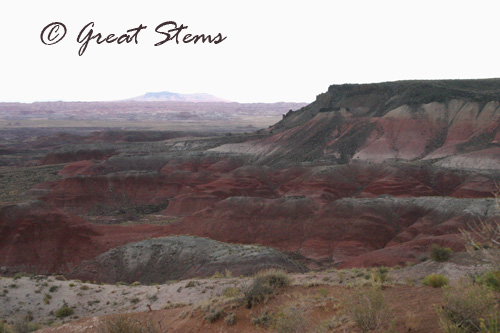

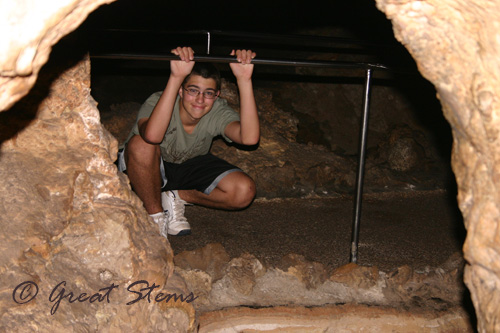
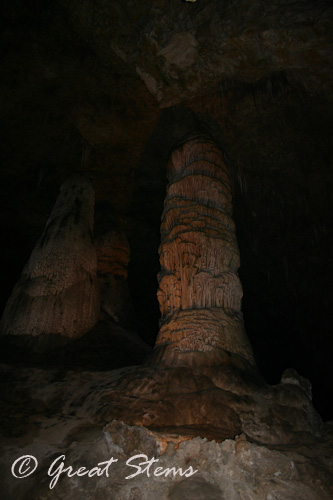
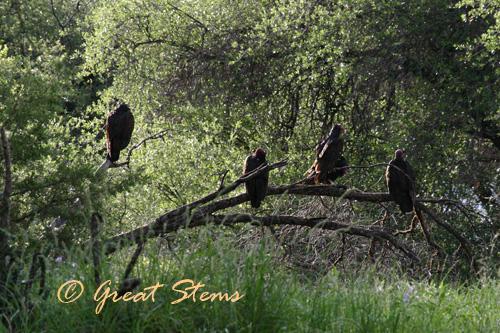
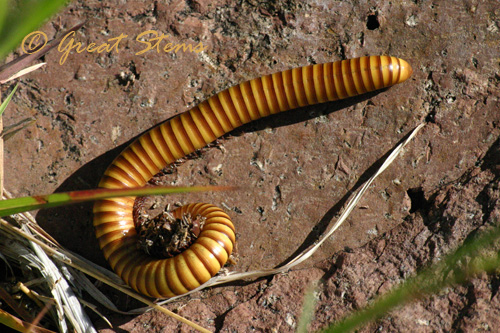
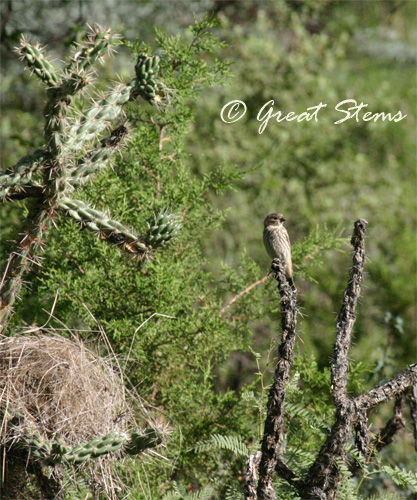
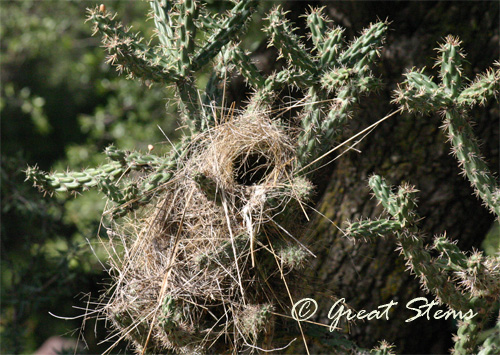
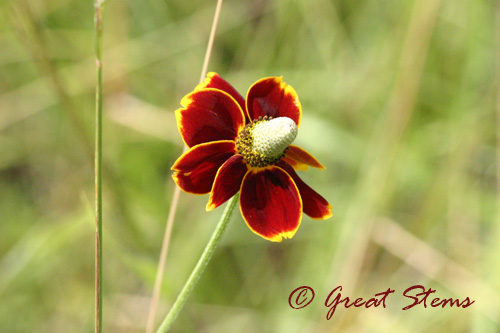
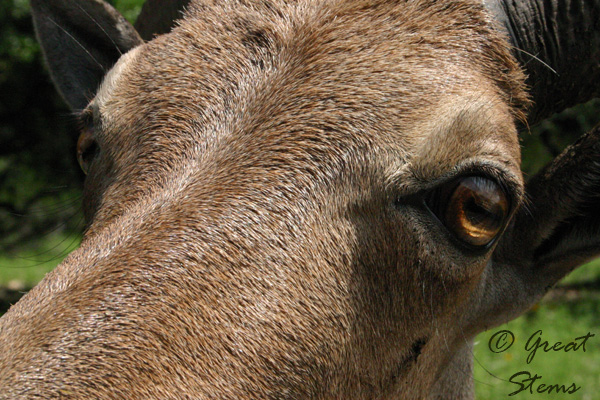
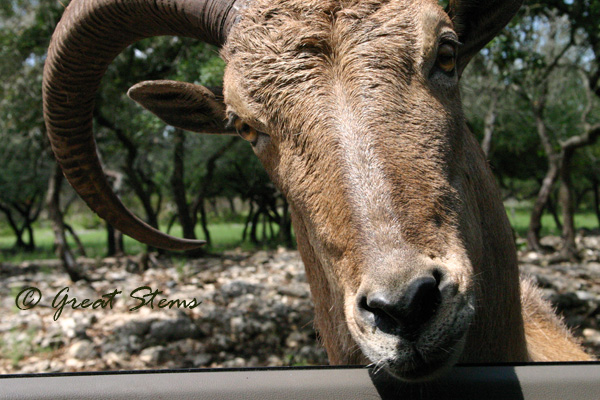
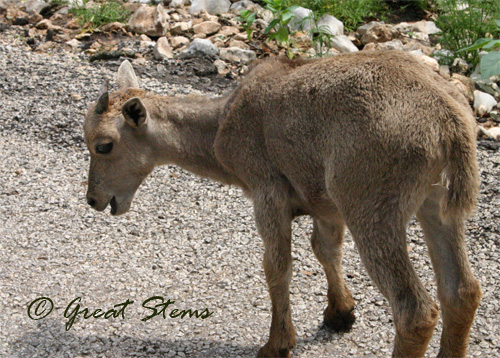
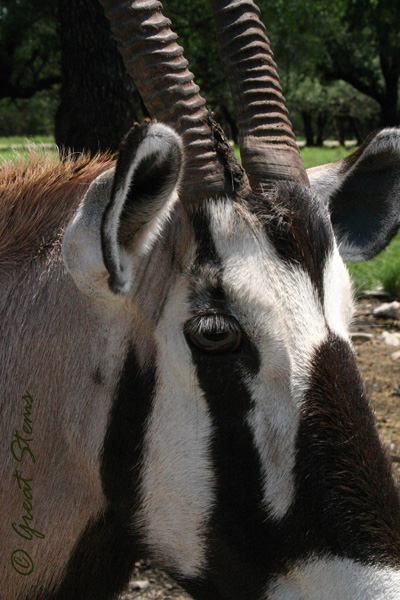
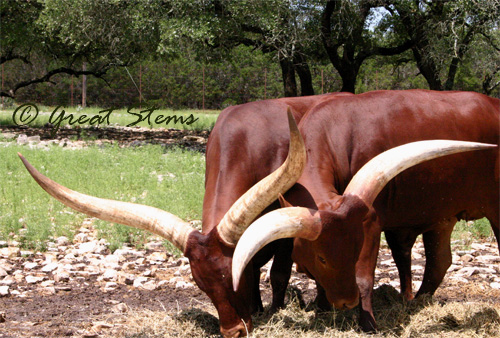
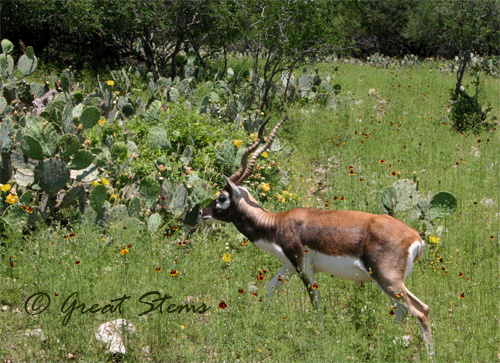
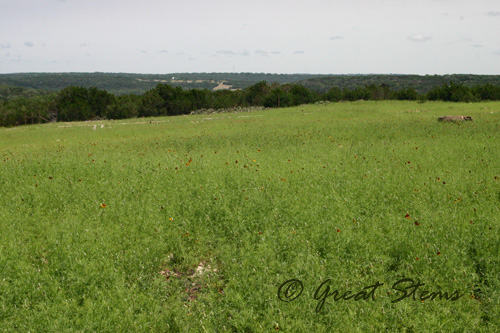
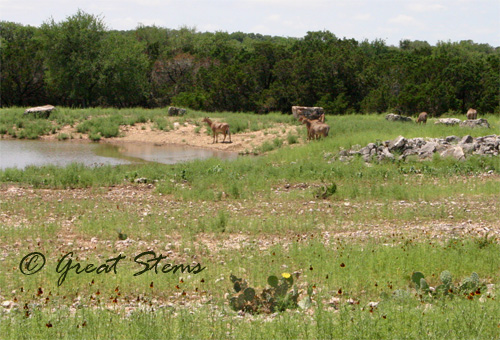
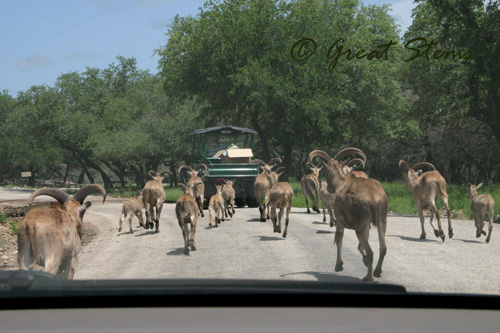
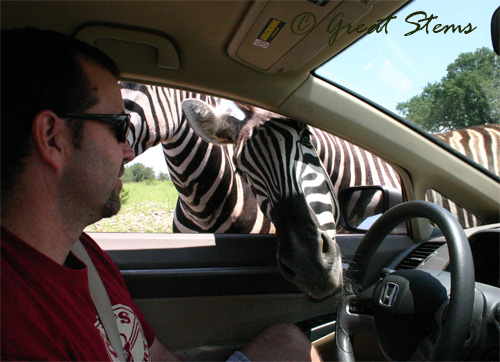
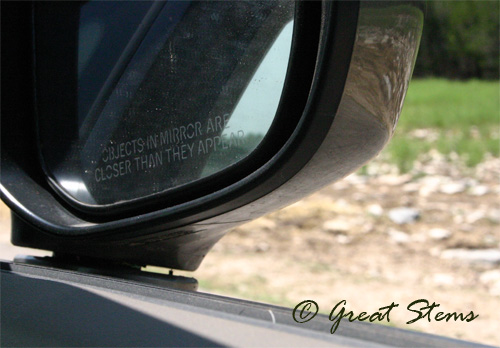
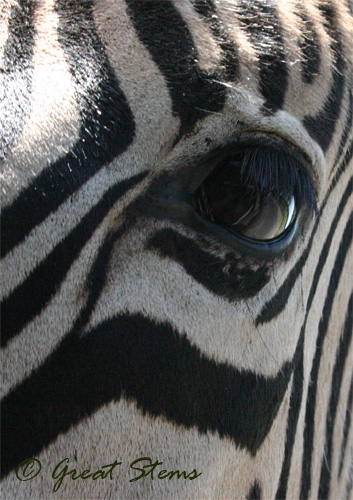
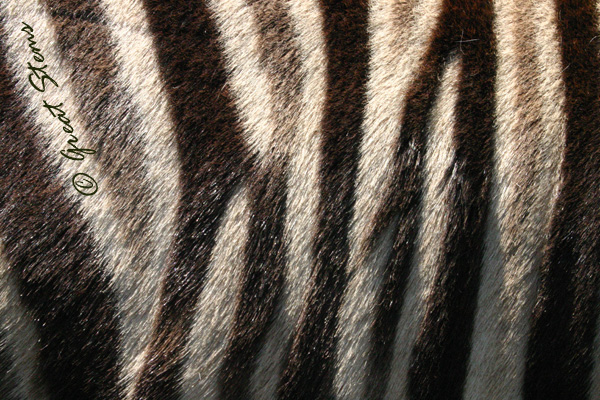
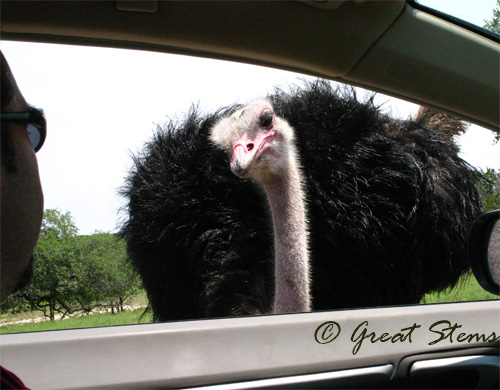
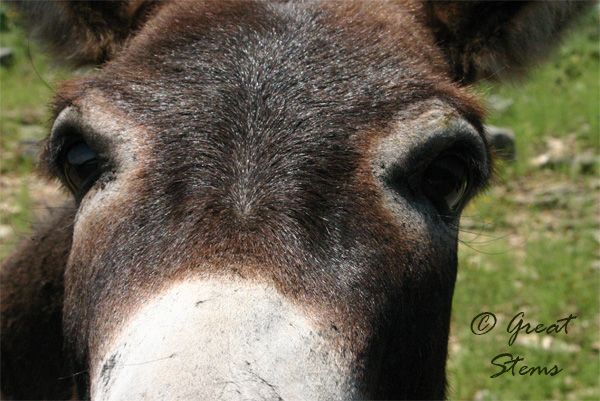
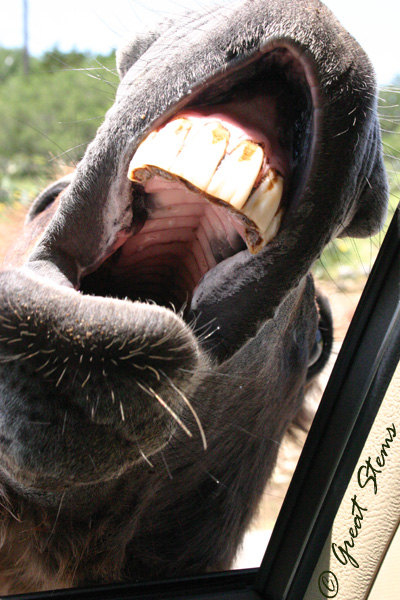
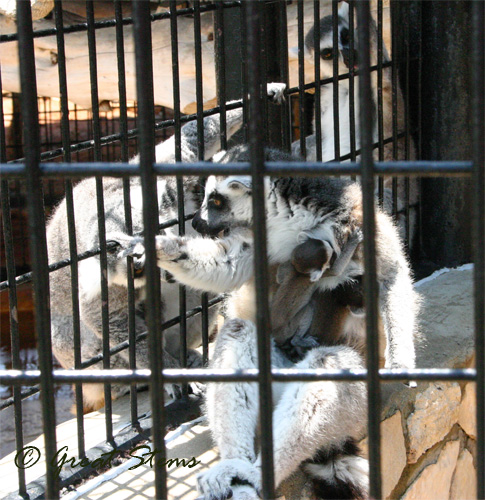
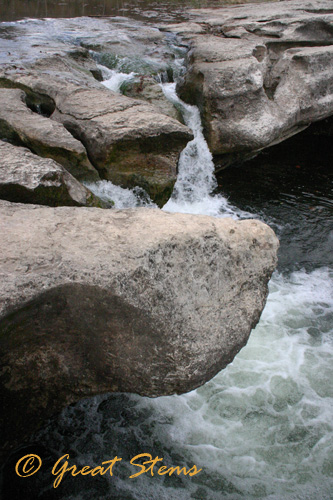
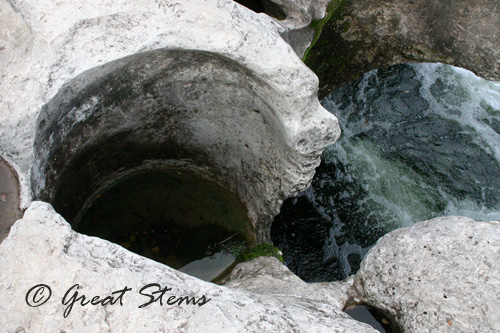
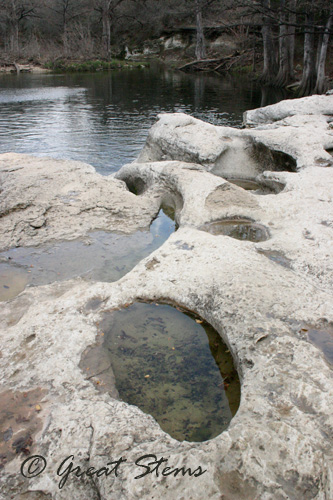
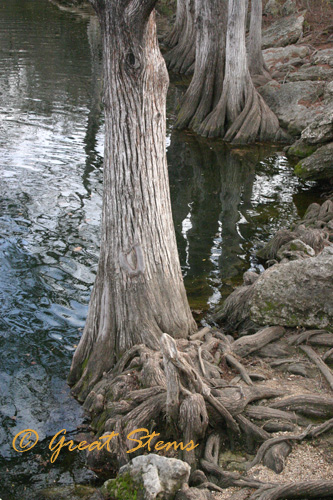

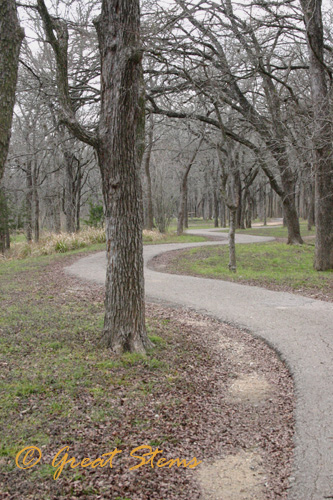
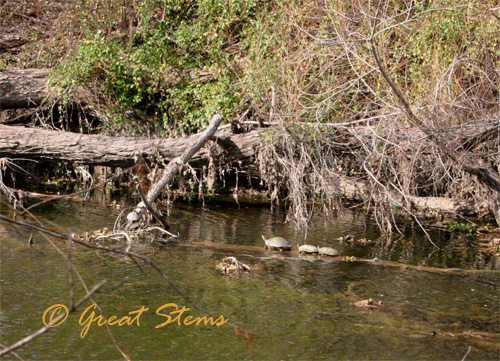
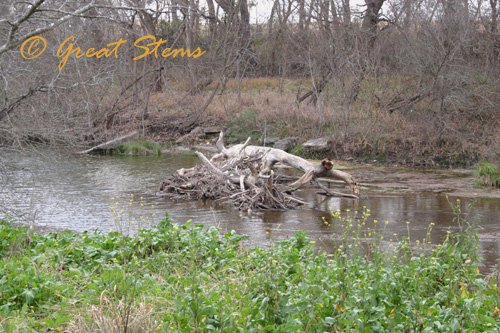
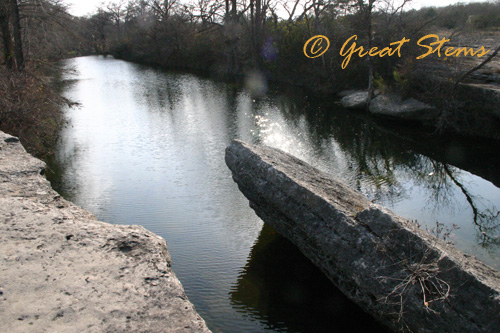
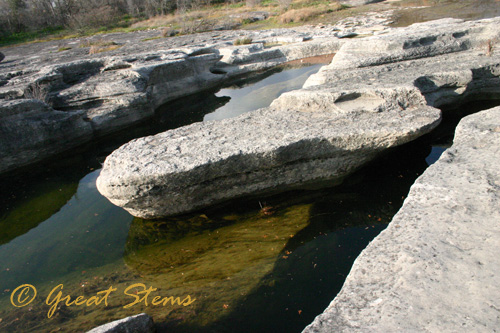
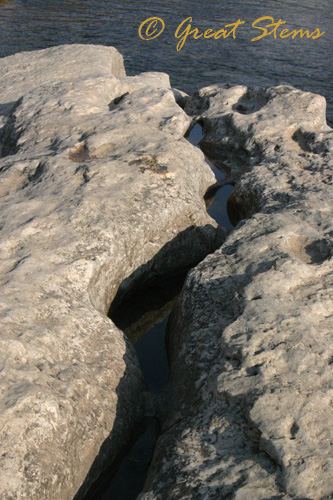
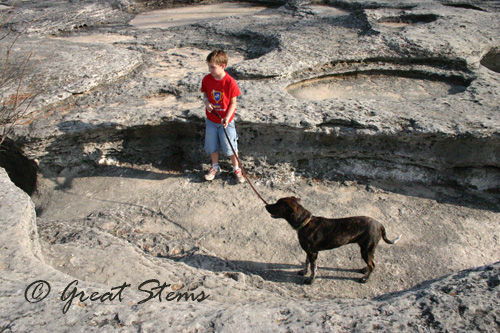 The Lower Falls look different from what I remember from years ago — presumably this is a combination of water erosion at work and current flow of the creek. To cross to the other side, where the old homestead is, one has to jump across a channel just large enough to be risky for an adult and way too dangerous for children to safely cross.
The Lower Falls look different from what I remember from years ago — presumably this is a combination of water erosion at work and current flow of the creek. To cross to the other side, where the old homestead is, one has to jump across a channel just large enough to be risky for an adult and way too dangerous for children to safely cross.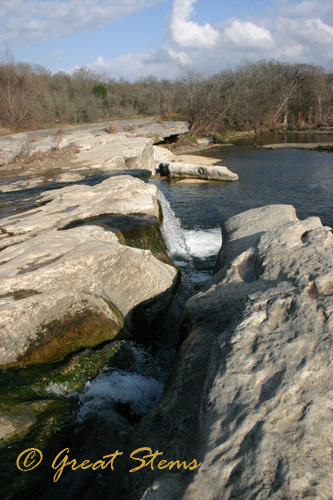
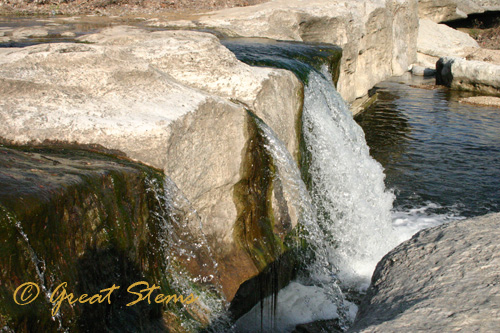
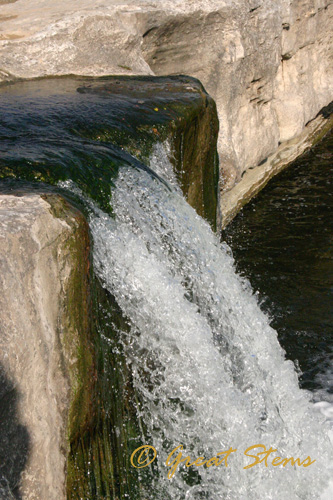
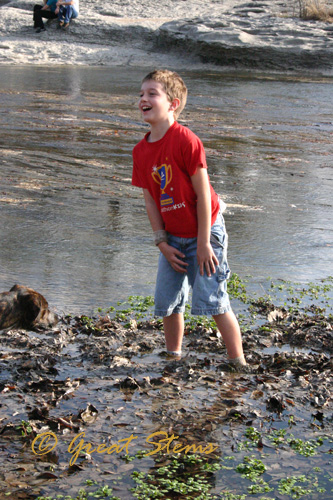
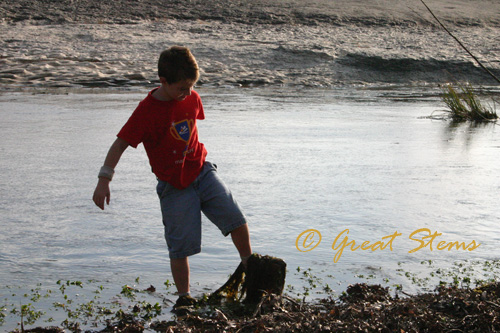
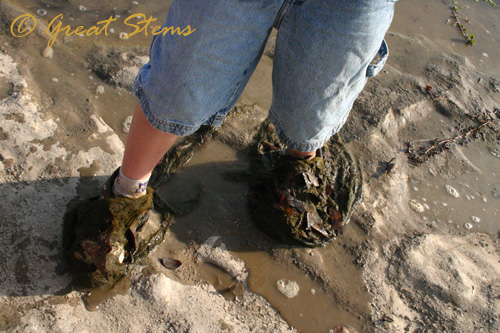 On the other side of the park, we could really envision the McKinney ranch of old.
On the other side of the park, we could really envision the McKinney ranch of old. 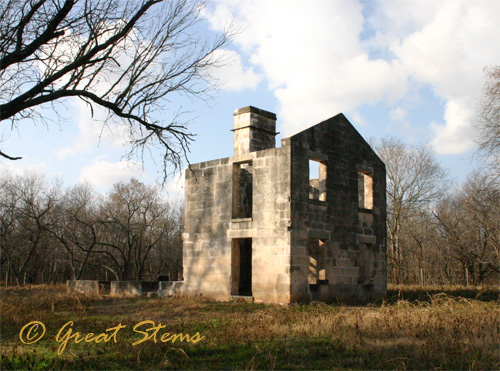 It’s easy to picture horses pulling a wagon under the trees along this wide road.
It’s easy to picture horses pulling a wagon under the trees along this wide road.